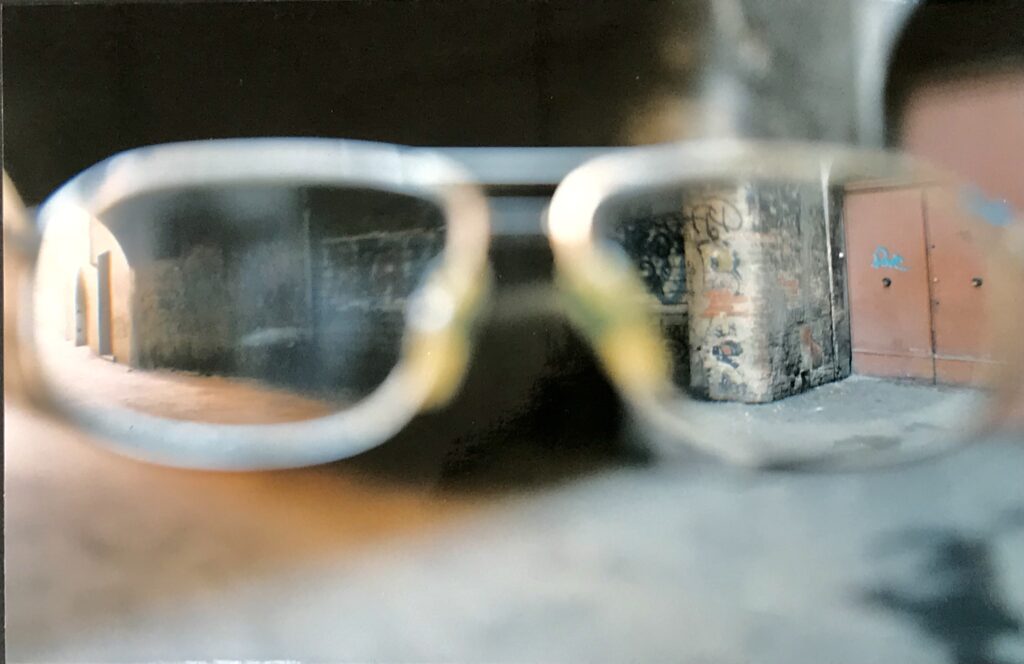
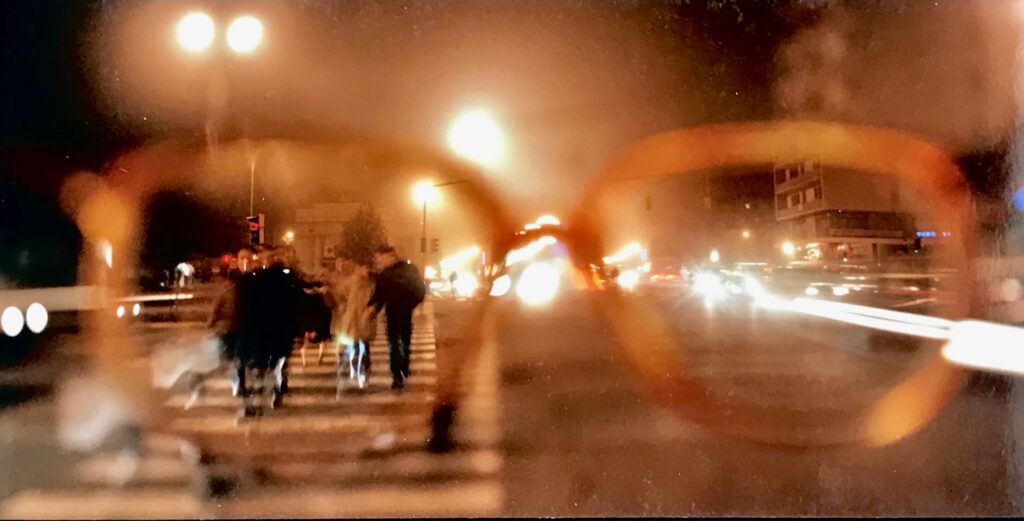
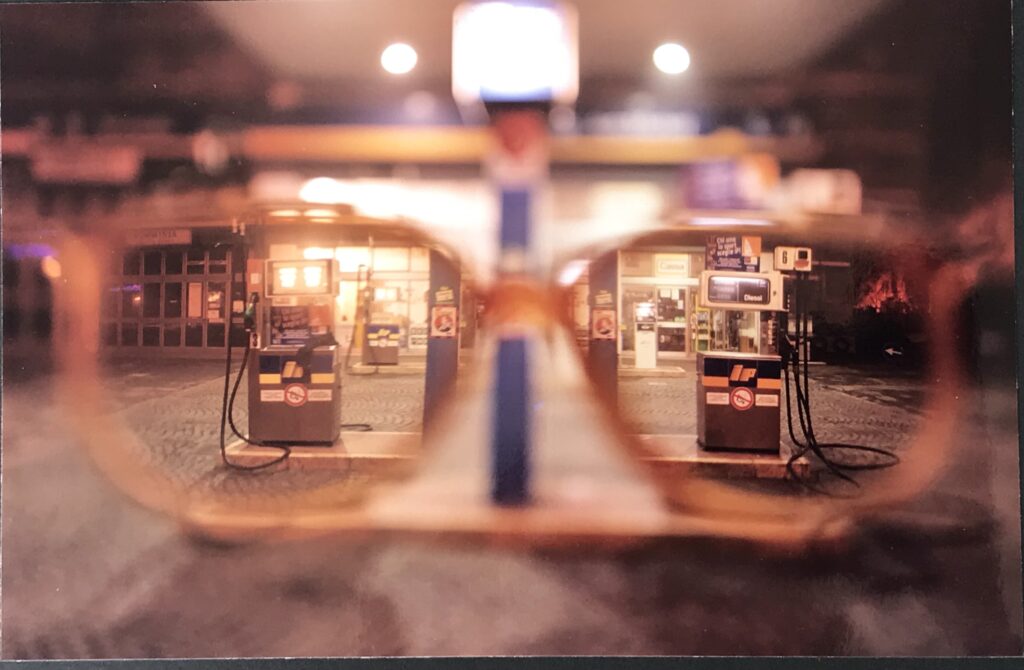
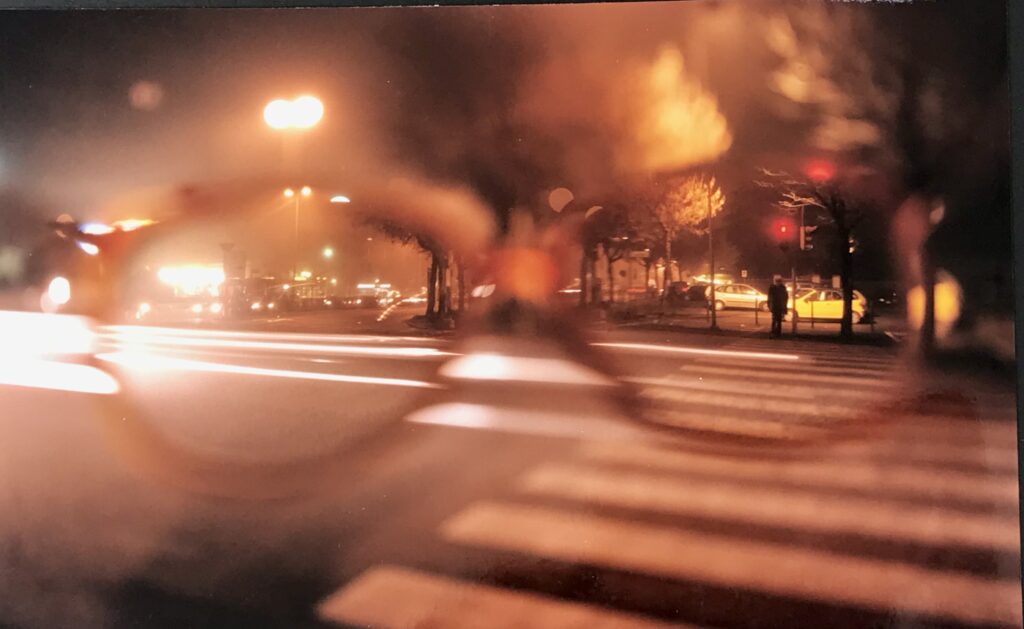
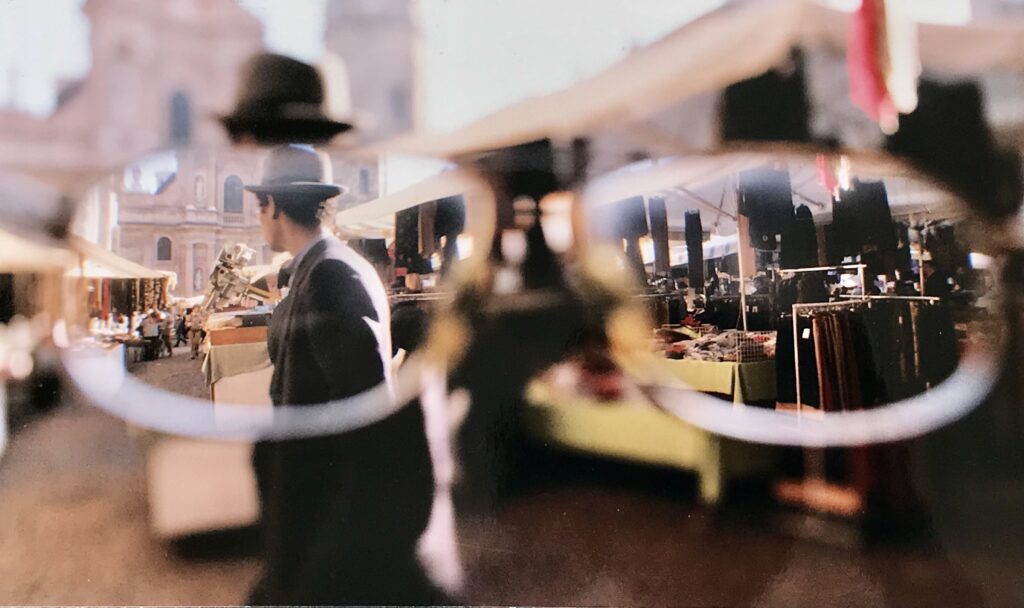
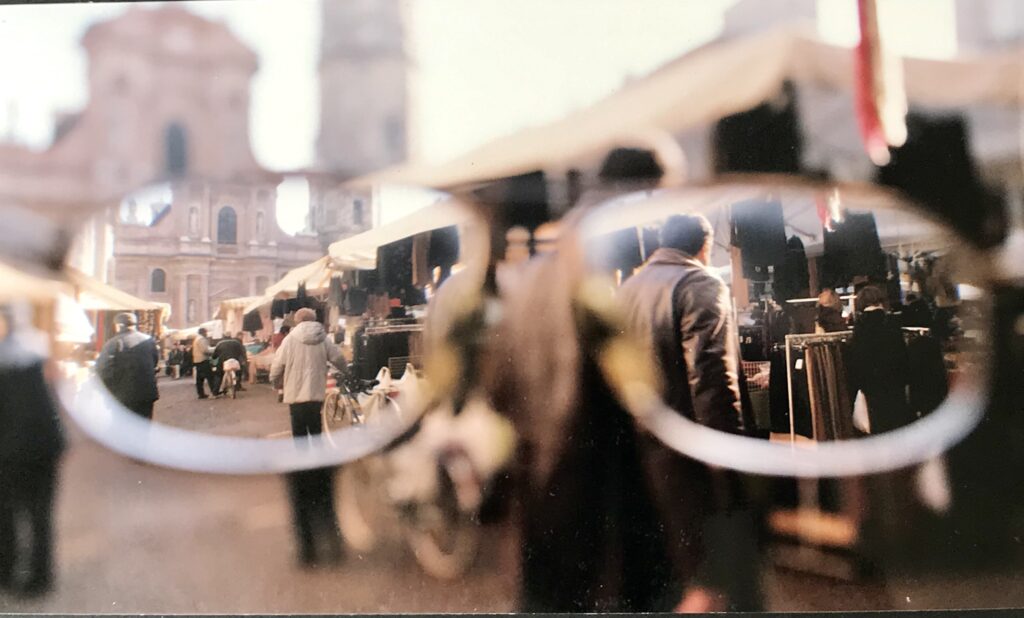
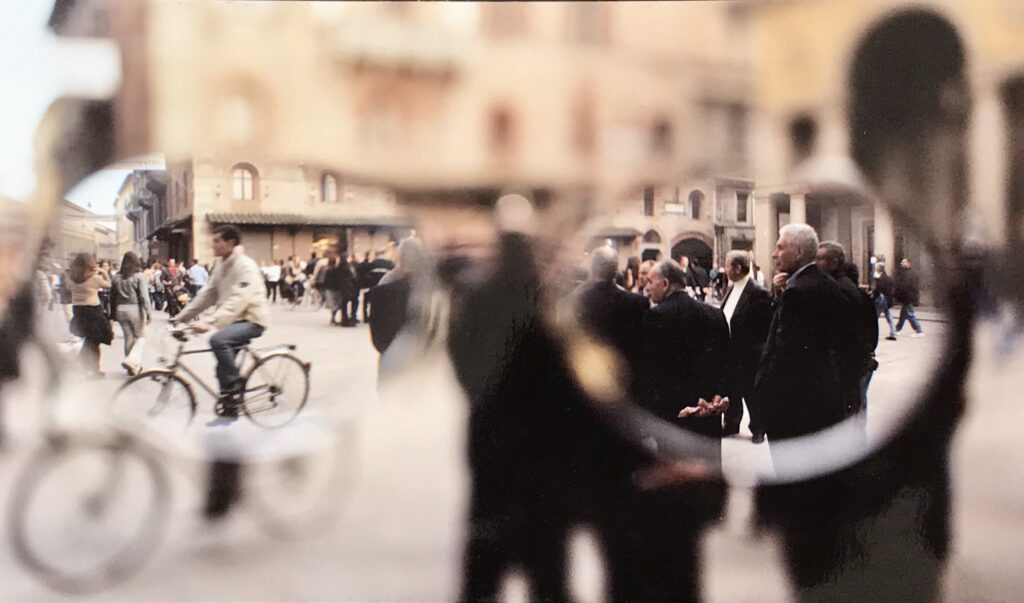
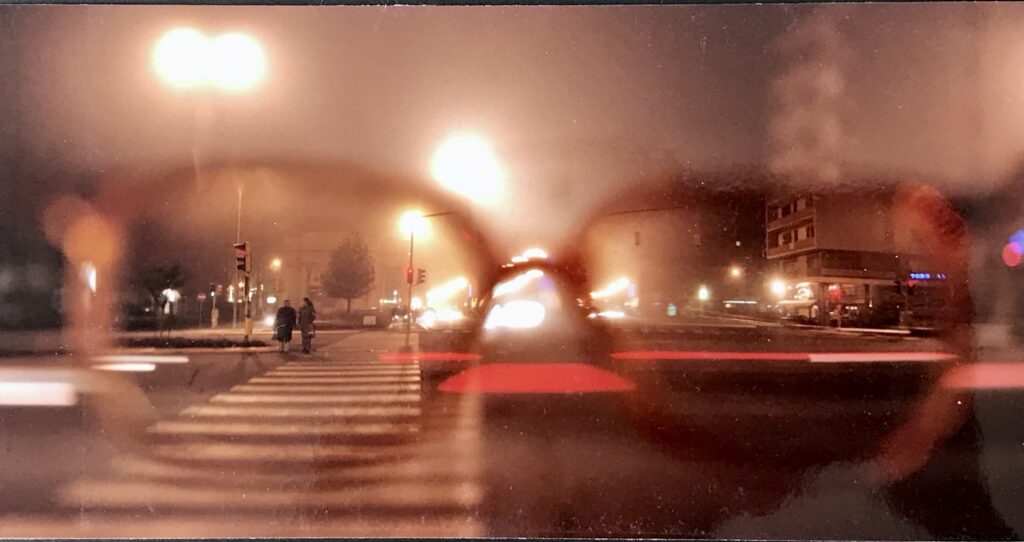
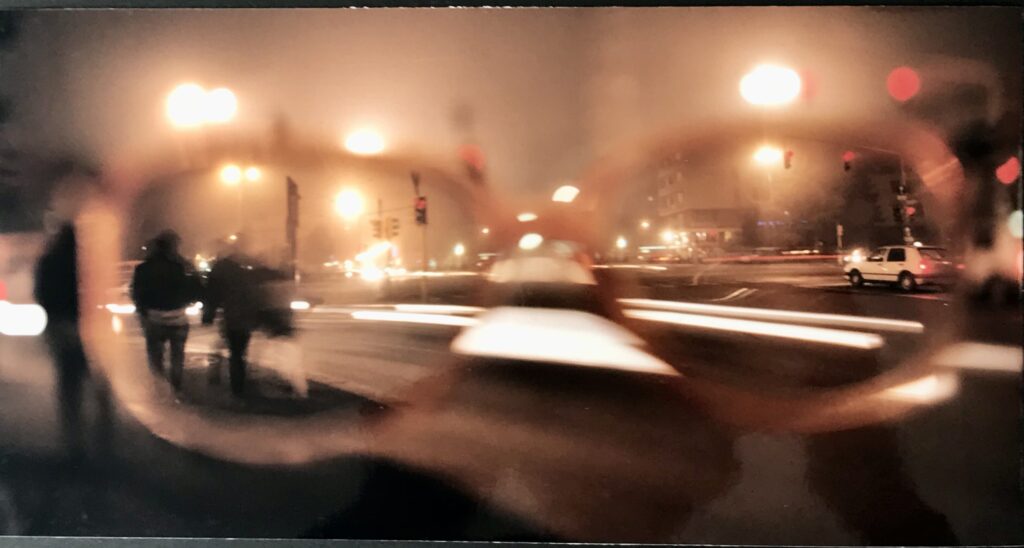
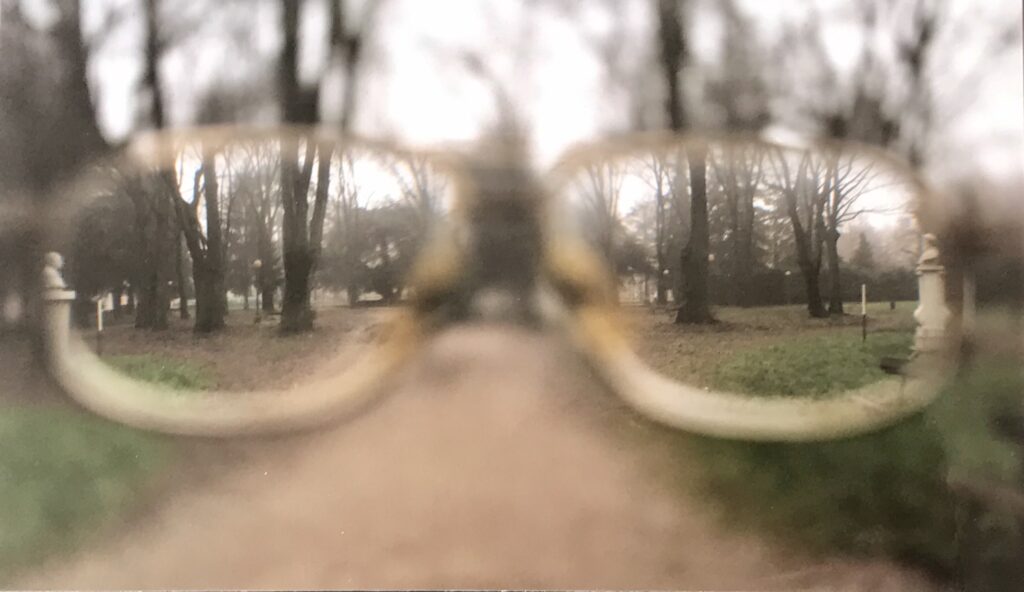
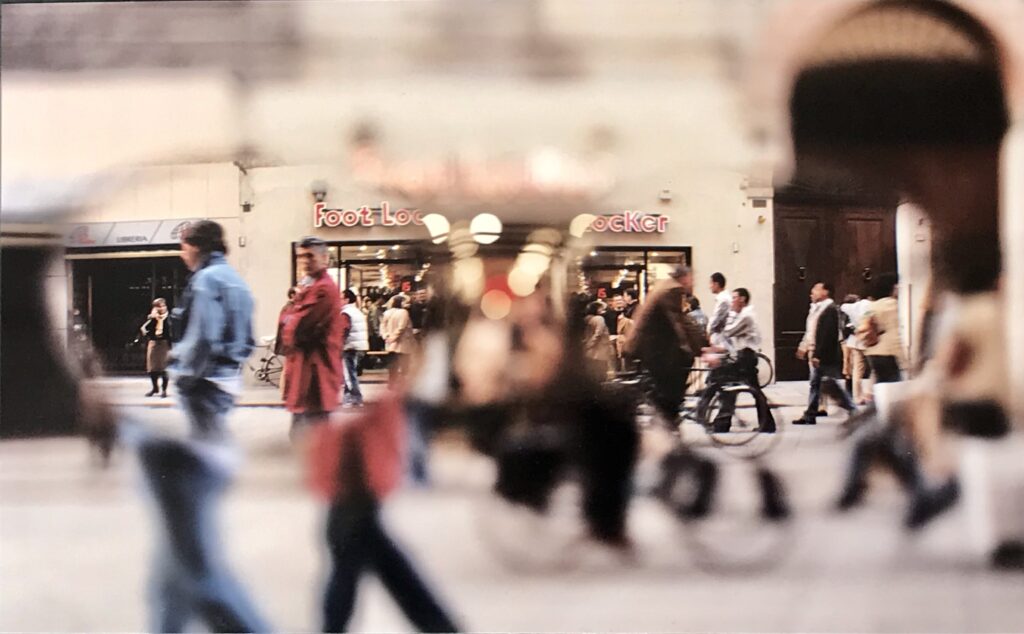
Myopia
“Attraverso una visione più morbida, laddove la realtà filtrata dalle lenti, appare avvolta da una magica foschia , un ponte tra fuoco e sfuocato , tra il reale e l’immaginario, dove anche il traffico, illuminato dalle luci della sera, si anima come un carillon..”
Gianluca Chiodi presenta un lavoro del 2002 che partecipò al Premio Arte 2005. Le fotografie sono realizzate con la pellicola e stampate analogicamente.
“A softer vision where reality, filtered through lenses, appears in a magic mist, a bridge between focus and out of focus, between reality and immagination, where also the traffic, illuminated by the evenings lights, livens like a carillon..”
Gianluca Chiodi presents a series by 2002, that attended the Premio Arte 2005. The photos are taken on film and analogically printed.
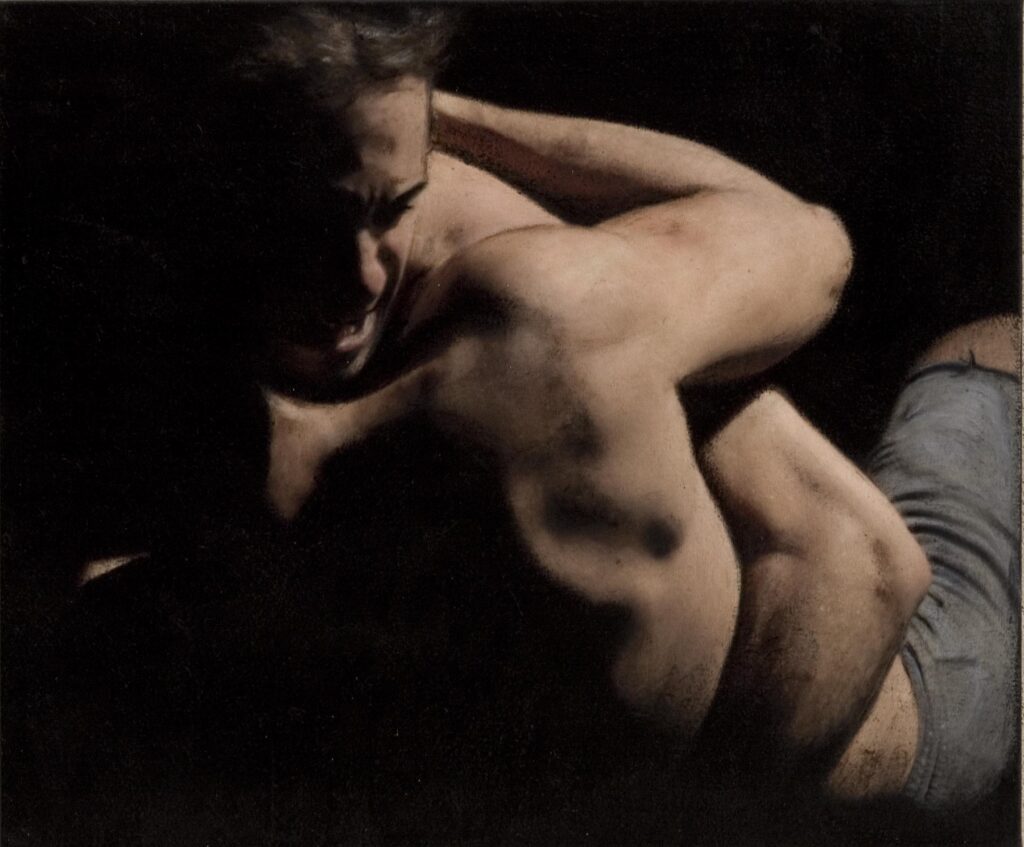
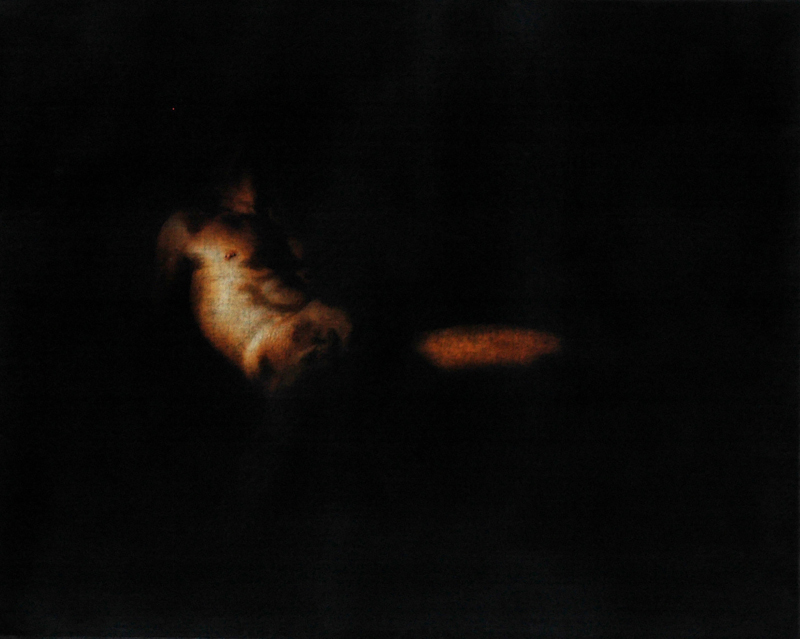
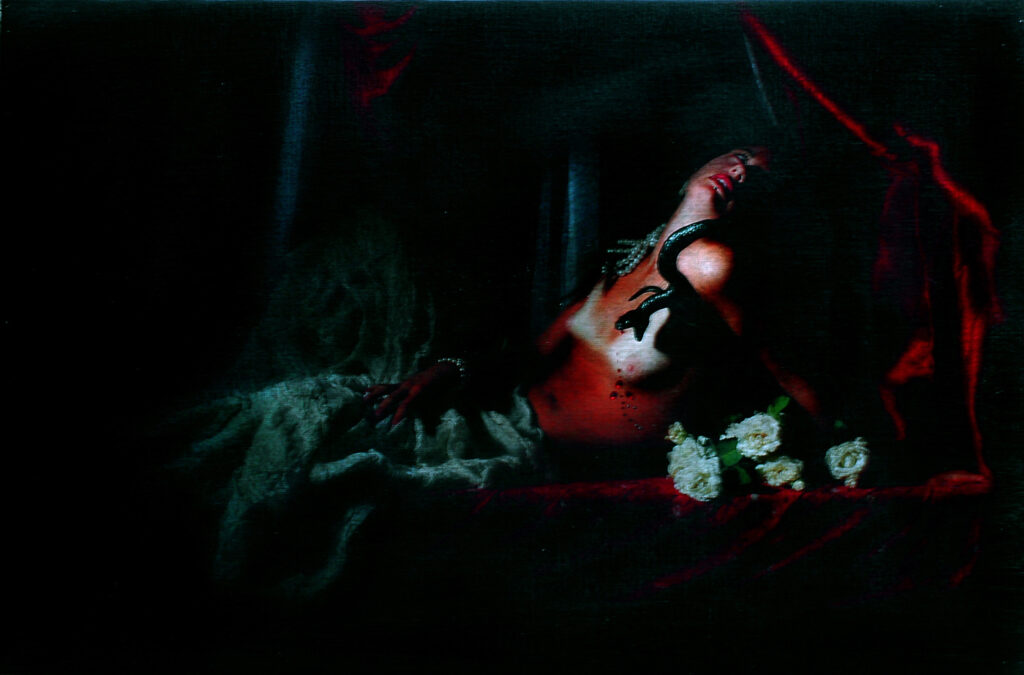

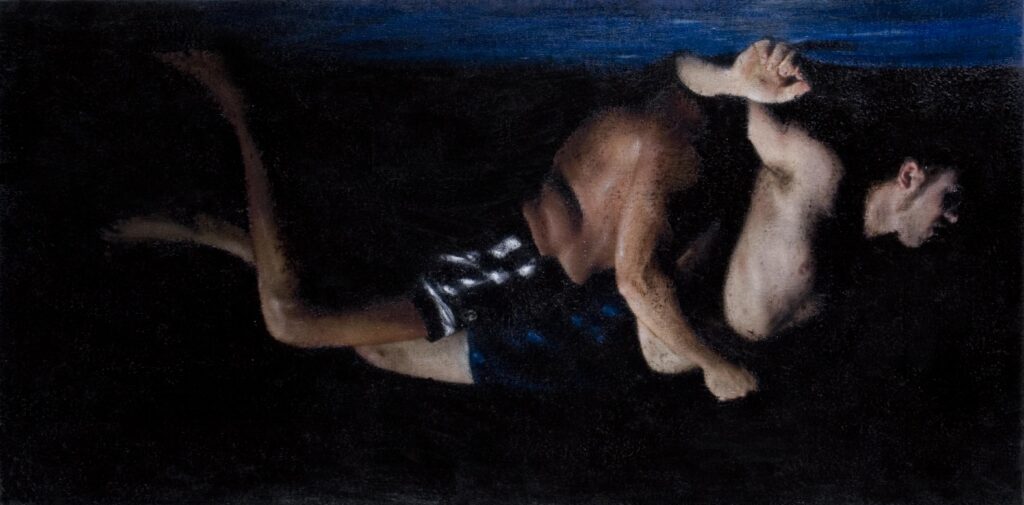
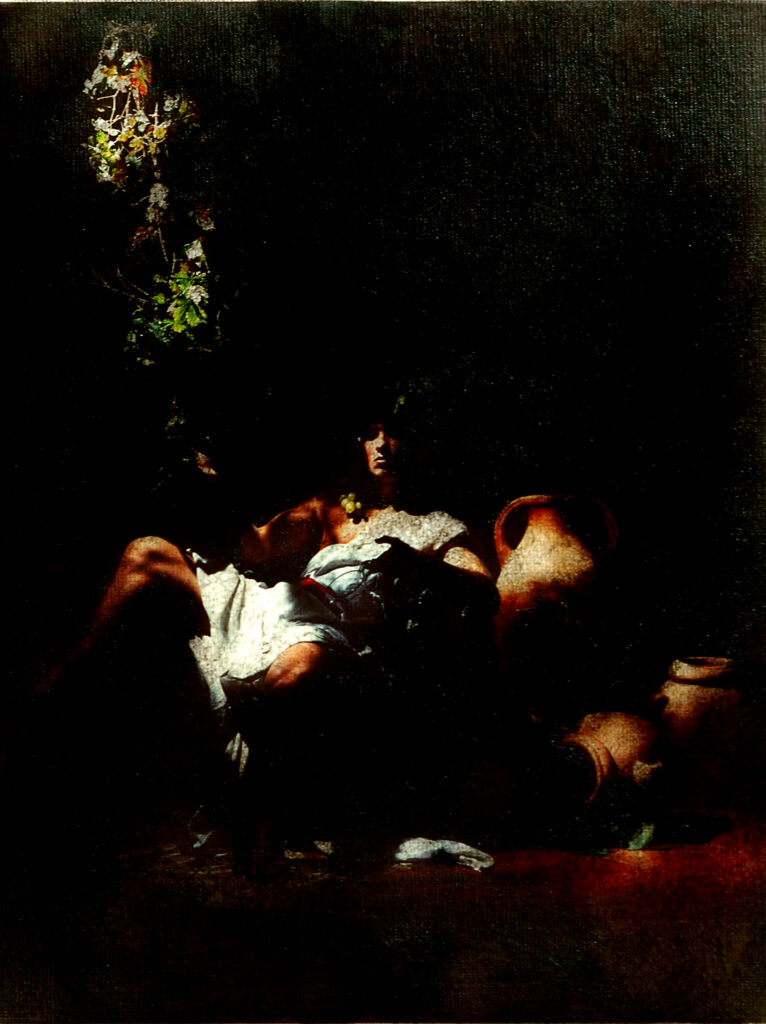
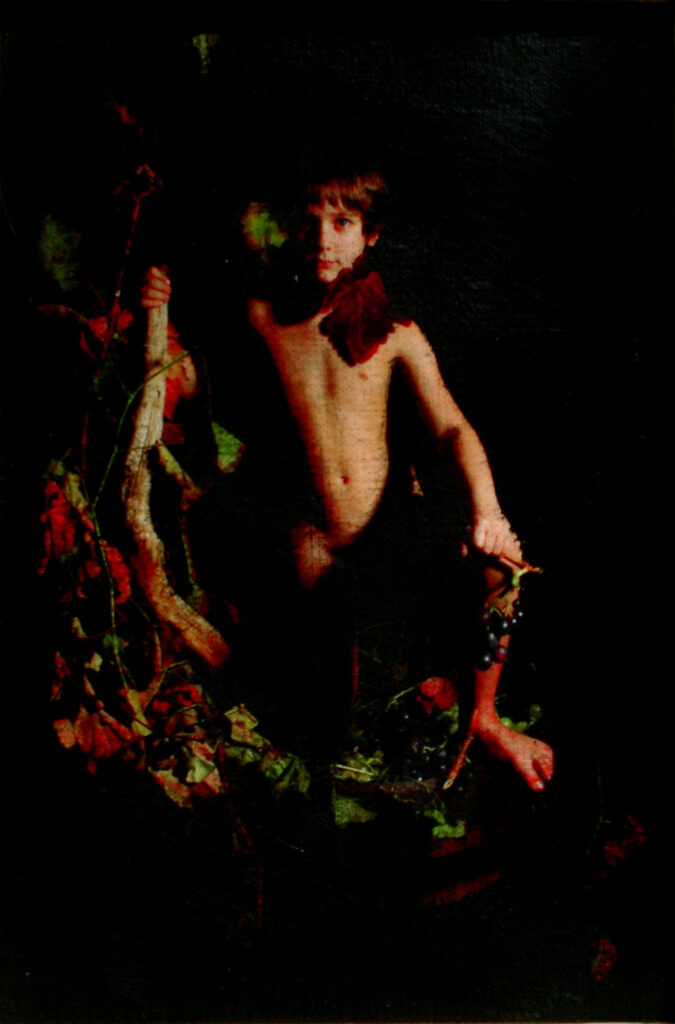
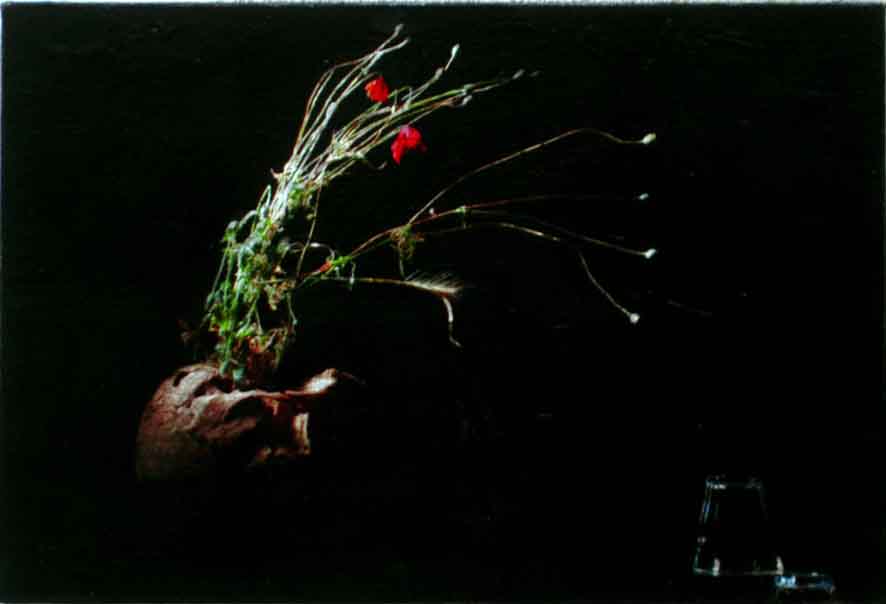
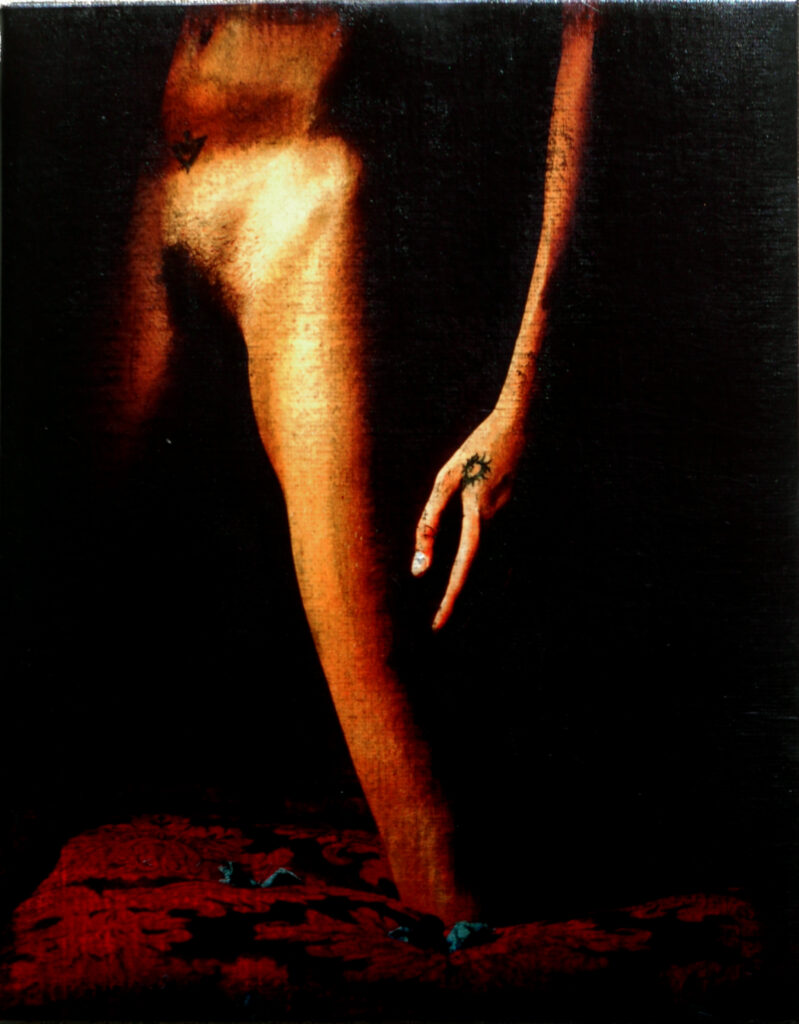
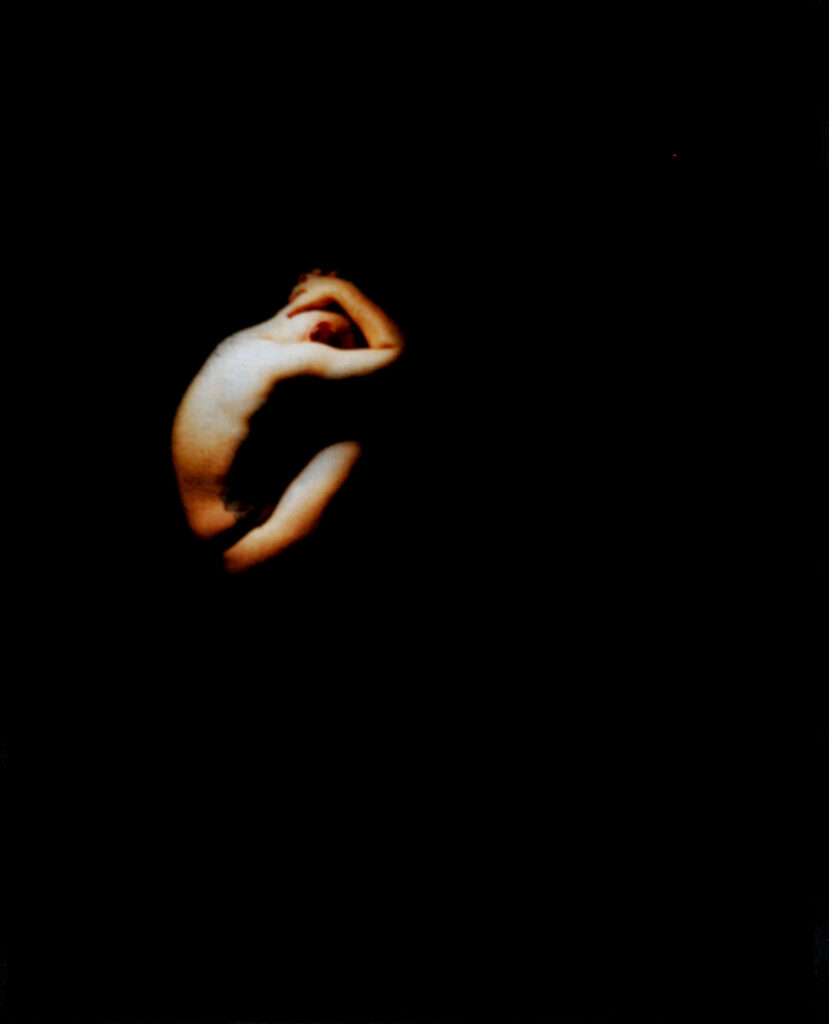
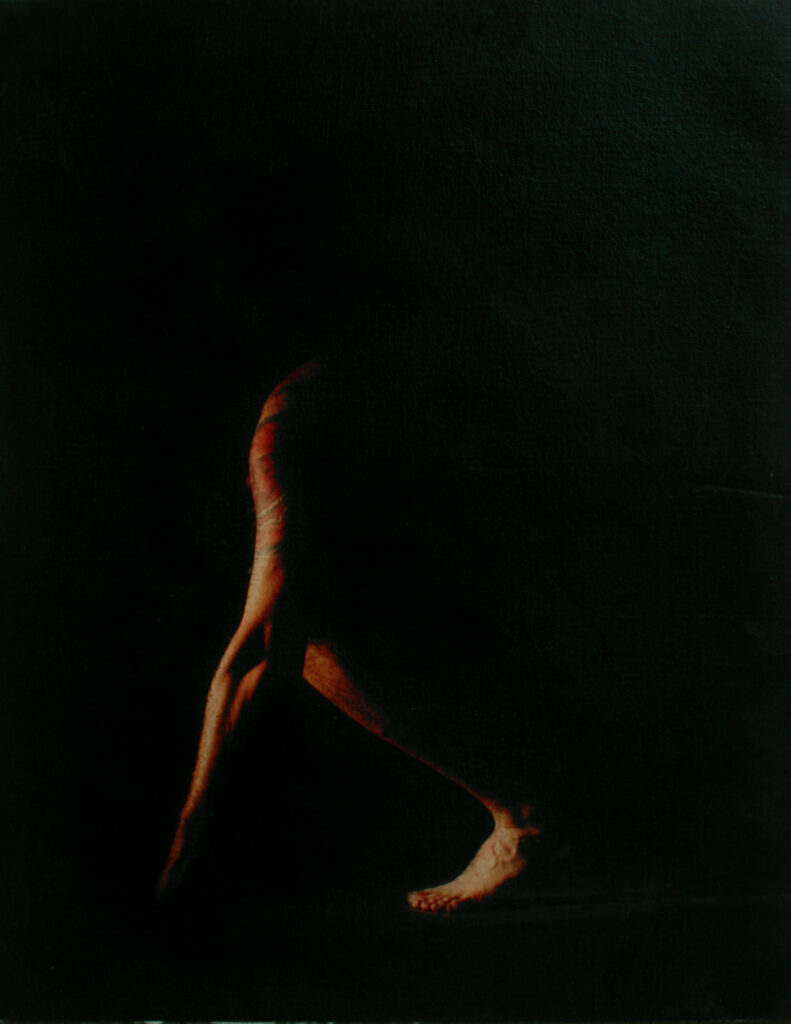
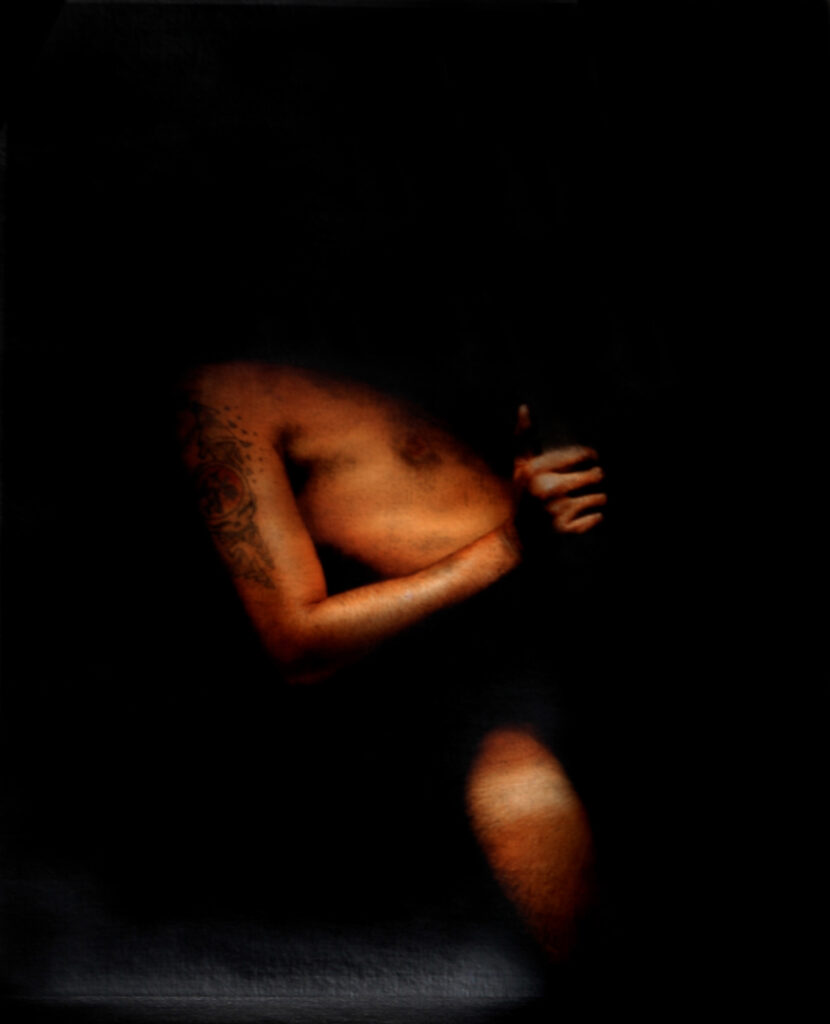
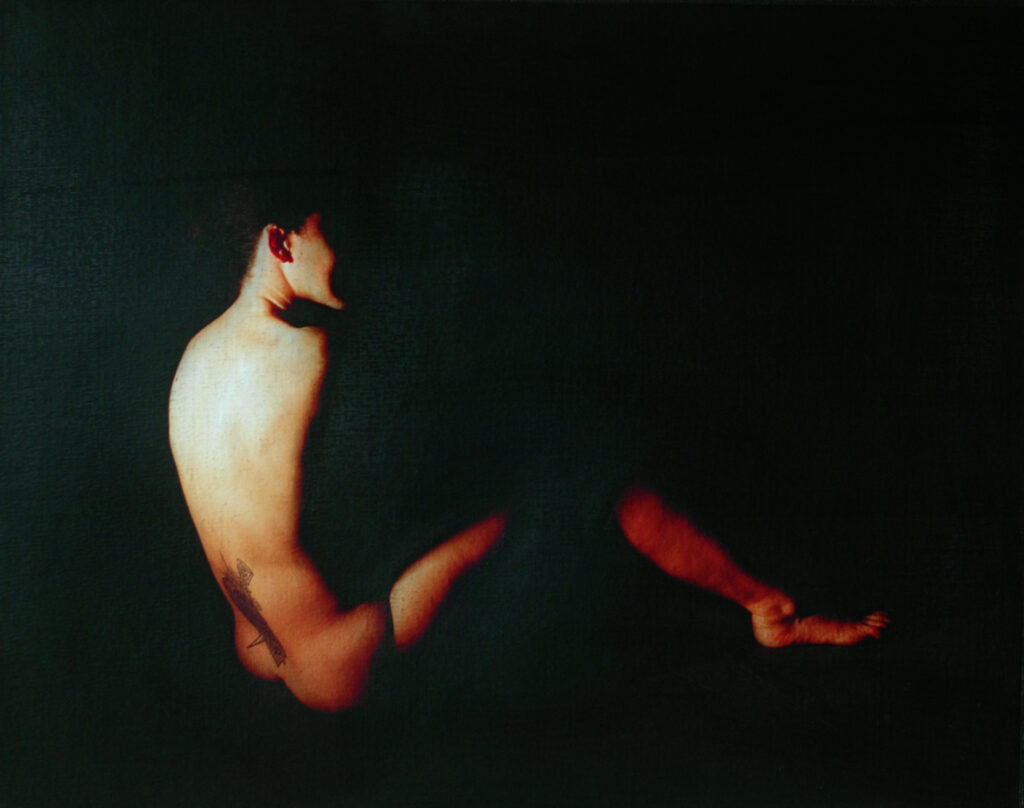
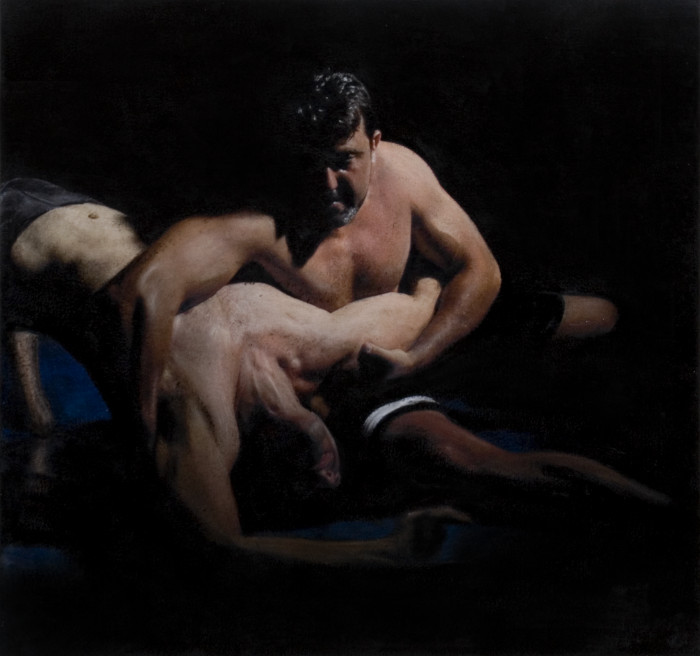
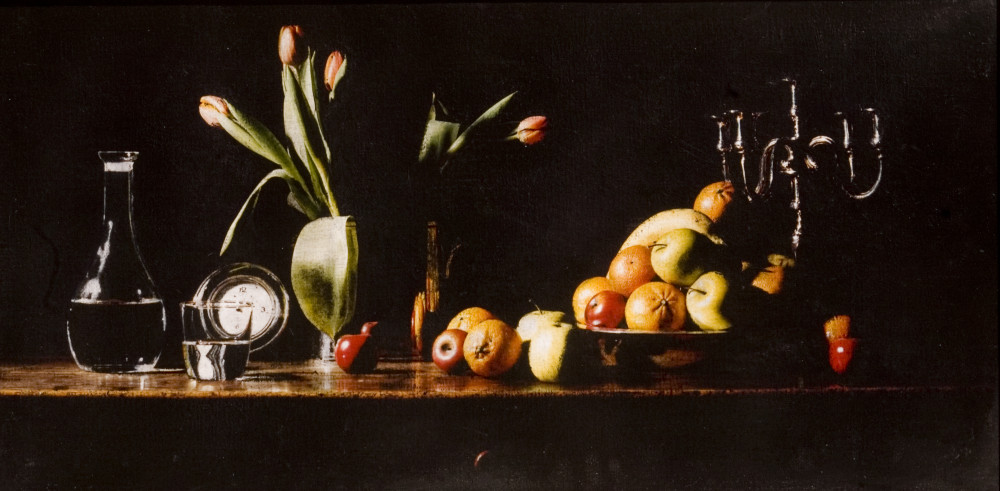
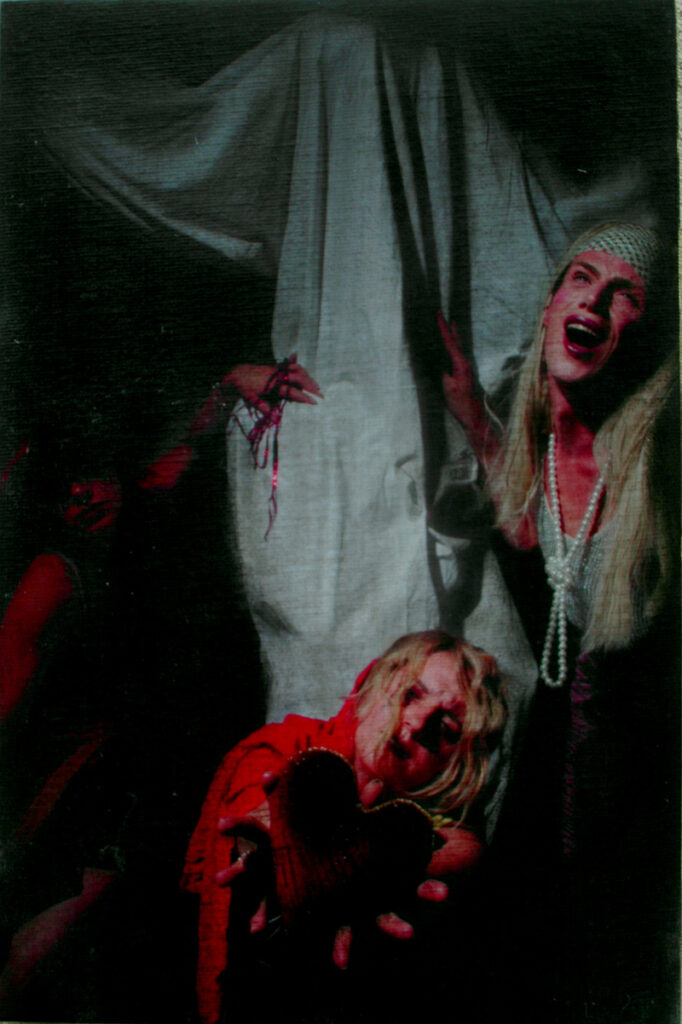
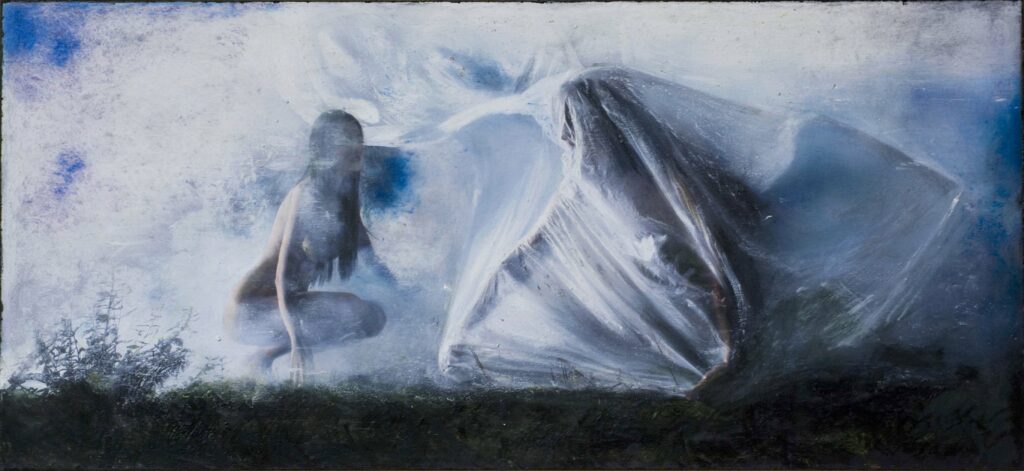
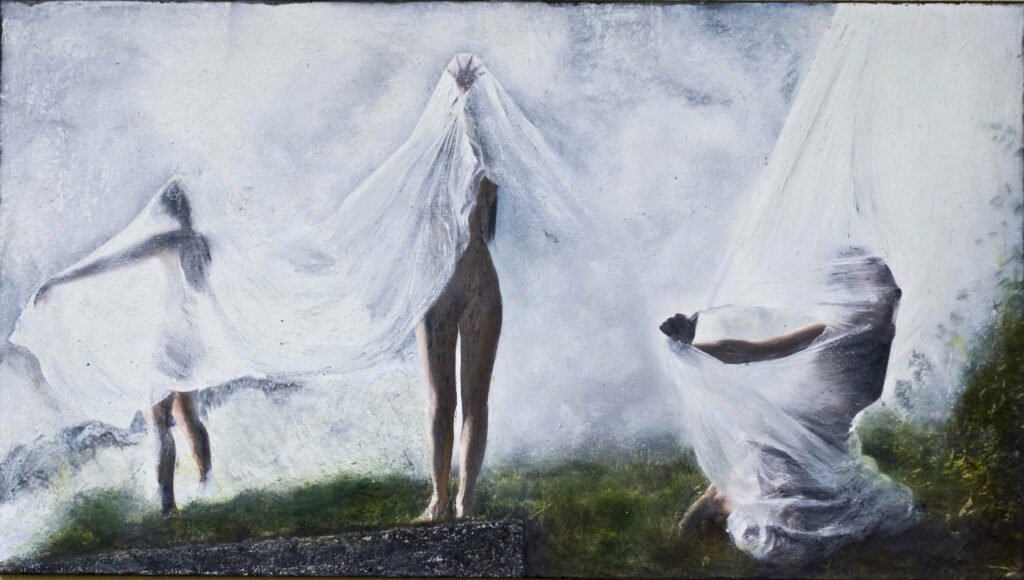
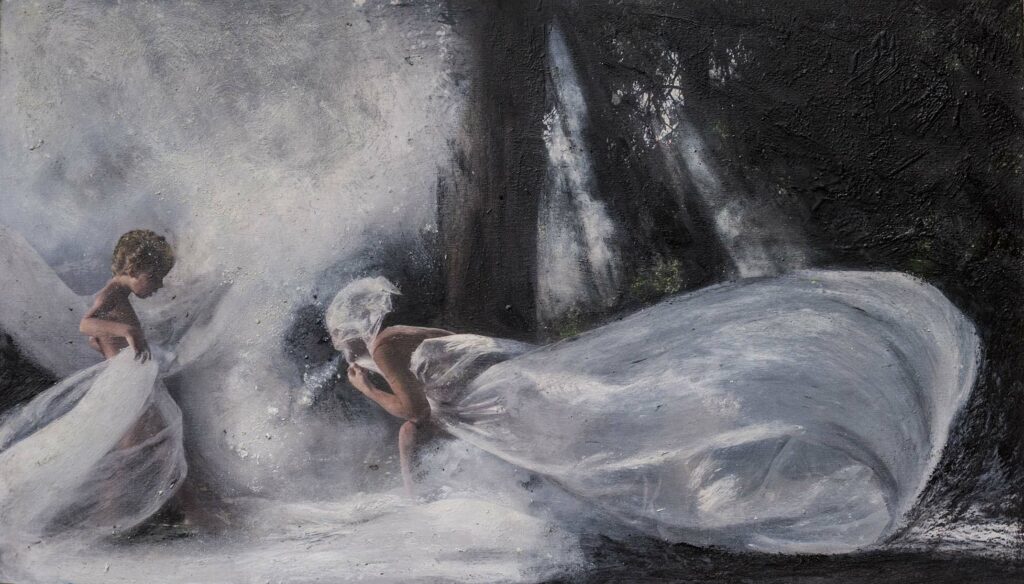
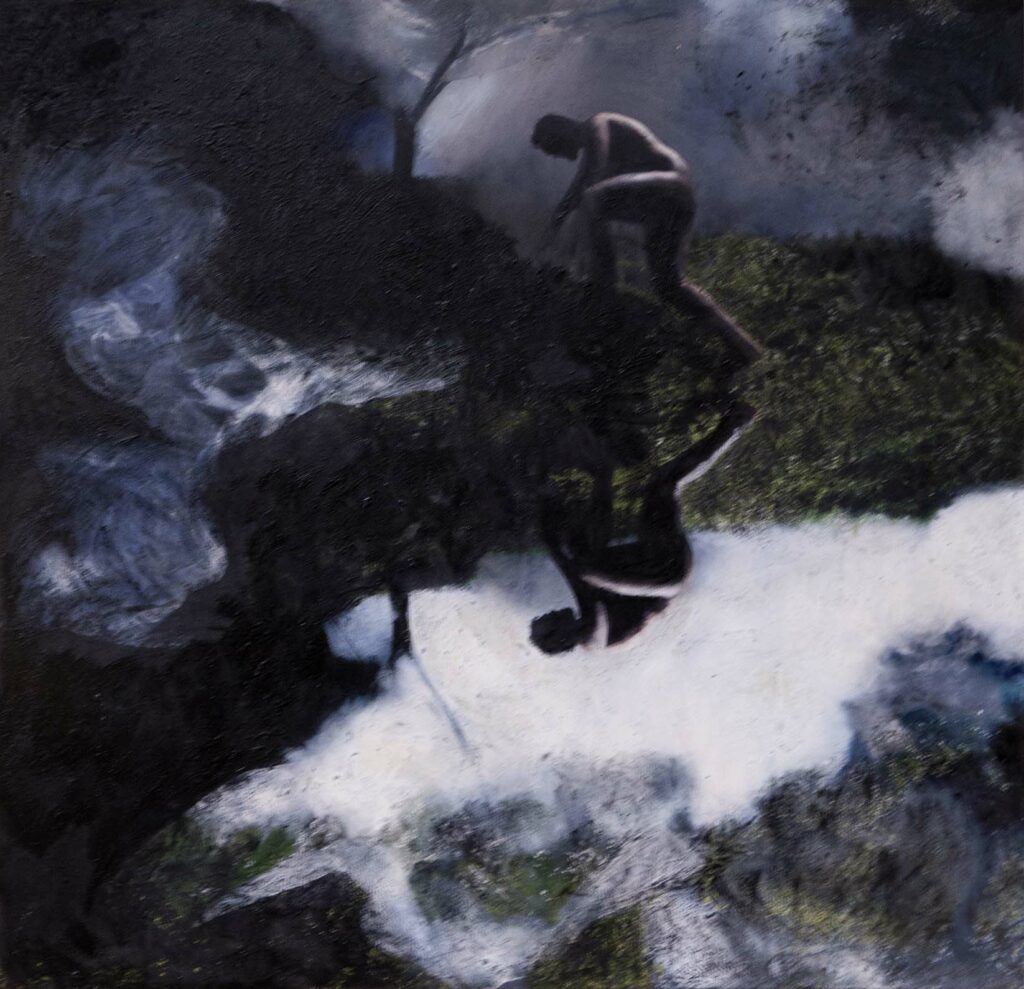
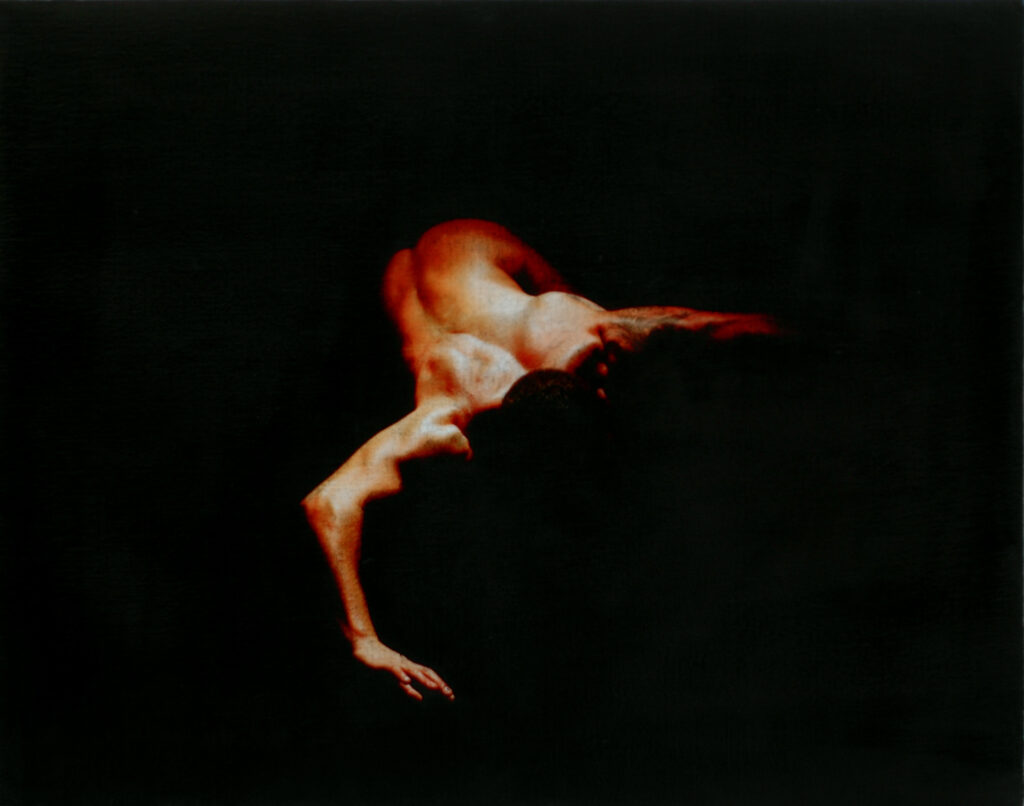
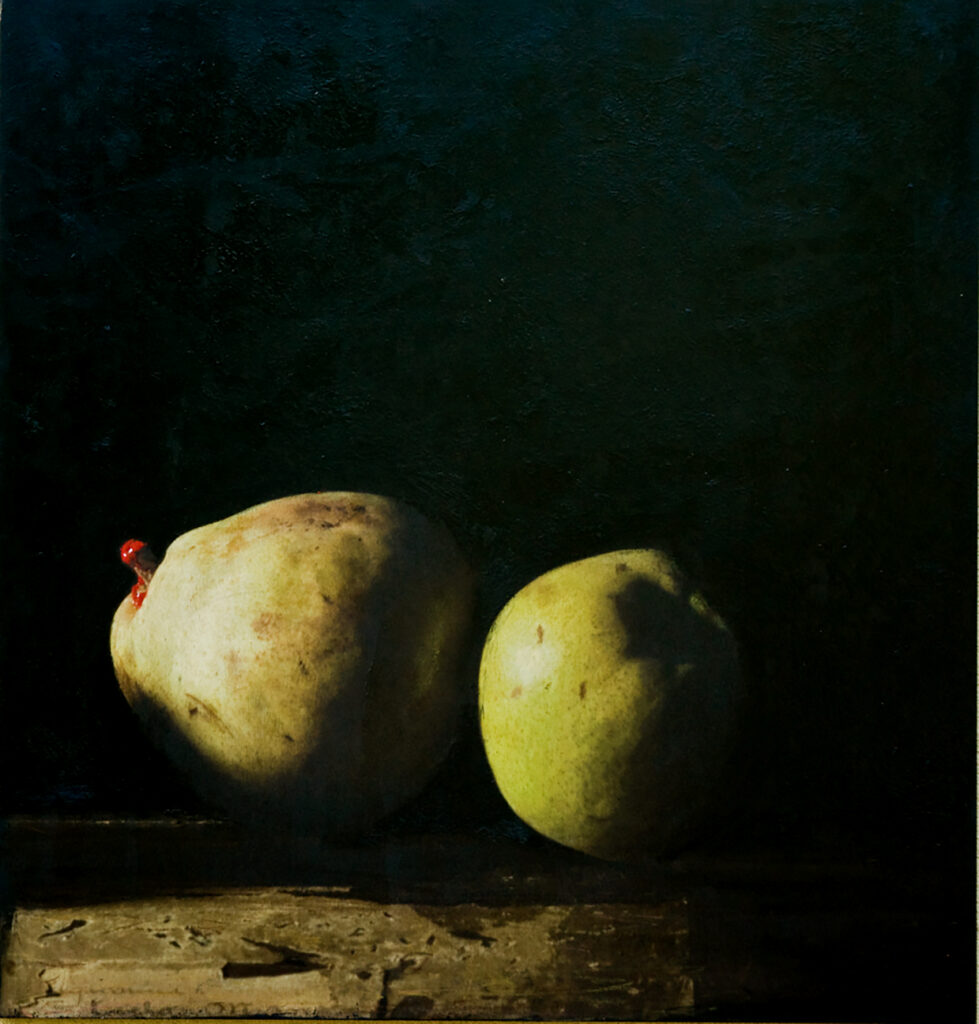
Gianluca Chiodi
OPERA AL NERO 2003/2023
GENESI
l’ec-citazione della pittura
a cura di Barbara Frigerio
28 ottobre – 19 novembre 2023
Museo delle Genti d’Abruzzo
Via delle Caserme, 24 Pescara
«La formula l’Opera al nero (…) designa nei trattati alchimistici la fase di separazione e di dissoluzione della sostanza ed era, pare, la parte più difficile della Grande Opera. Si discute tuttora se tale espressione venisse applicata ad audaci esperimenti sulla materia o se si riferisse simbolicamente al travaglio dello spirito nell’atto di liberarsi dalle abitudini e dai pregiudizi. È probabile che sia servita a indicare alternativamente o simultaneamente l’uno e l’altro.»
(Marguerite Yourcenar –L’opera al nero, Nota dell’autore)
Applicata all’arte di Gianluca Chiodi, se vogliamo, come suggerisce il titolo di questa esposizione che ripercorre la nascita di questo ciclo di lavori e ne celebra il ventennale, questa formula si può contemporaneamente riferire alla tecnica utilizzata e ai soggetti descritti.
Partiamo dalla tecnica: non è fotografia, né pittura, ma l’una e l’altra insieme, un unicum ottenuto attraverso una rivisitazione di una procedura antica: l’encausto.
Gli antichi romani scioglievano i pigmenti di colore nella cera e poi applicavano questa mistura all’intonaco, Chiodi reinventa questo procedimento utilizzando come base la fotografia ed il risultato è assolutamente d’effetto. L’immagine fotografica dona all’opera quella minuzia di dettagli che ci riporta alla pittura antica, ma la materia “cereo-pittorica” ne conferisce una densità e uno spessore nuovo. Corpi ed oggetti sembrano immersi in un magma oscuro dal quale cercano di riemergere, dei novelli “Prigioni” che lottano per uscire dal buio.
Nella serie “Furia corporis” il combattimento fisico diviene il simbolo di quel desiderio e necessità che ha l’uomo di lottare per affermare il proprio sé e la propria posizione nel mondo.
Medesimo ardore, accompagnato da una sapiente ironia, nello scalfire i pregiudizi della società contemporanea lo ritroviamo nelle “messe in scena” di “Santi , peccati e peccatori” , apparenti rivisitazioni di scene sacre barocche.
L’ultima sezione è dedicata alle nature morte, che per il loro violento gioco chiaroscurale ci riportano alla lezione caravaggesca, ed esaltano l’eleganza e la sapienza compositiva di Chiodi.
Barbara Frigerio
“In alchemical treatises, the formula L’Oeuvre au Noir, designates what is said to be the most difficult phase of the alchemist’s process, the separation and dissolution of substance. It is still not clear whether the term applied to daring experiments on
matter itself, or whether it was understood to symbolize trials of the mind in discarding all forms of routine and prejudice. Doubtless it signified one or the other meaning alternately, or perhaps both at the same time.”
(Marguerite Yourcenar – The abyss, Author’s Note)
Applied to the art of Gianluca Chiodi, if we want, as suggested by the title of this exhibition which traces the birth of this series of works and celebrates its twentieth anniversary, this formula can simultaneously refer to the technique used and the subjects described.
Let’s start from the technique: it is not photography, nor painting, but both together, a unicum obtained through a revisitation of an ancient procedure: encaustic. The ancient Romans dissolved color pigments in wax and then applied this mixture to plaster. Chiodi reinvents this process using photography as a basis and the result is
absolutely impressive. The photographic image gives the work that meticulous detail that takes us back to ancient painting, but the “waxy-pictorial” material gives it a new density and thickness. Bodies and objects seem immersed in a dark magma from which they try to re-emerge, like new “Prisoners” struggling to escape from the
darkness.
In the “Furia corporis” series, physical combat becomes the symbol of that desire and need that man has to fight to assert his own self and his own position in the world.
We find the same ardor, accompanied by a skilful irony, in undermining the prejudices of contemporary society in the “stagings” of “Saints, sins and sinners”, apparent
reinterpretations of baroque sacred scenes.
The last section is dedicated to still lifes, which with their violent chiaroscuro take us back to the lesson of Caravaggio, and enhance Chiodi’s elegance and compositional wisdom.
Barbara Frigerio
Orari :
lun – ven : 9-13
sab – dom: 16-20
per info: Tel. 085 4510026 (int.1)
email : museo@gentidabruzzo.it
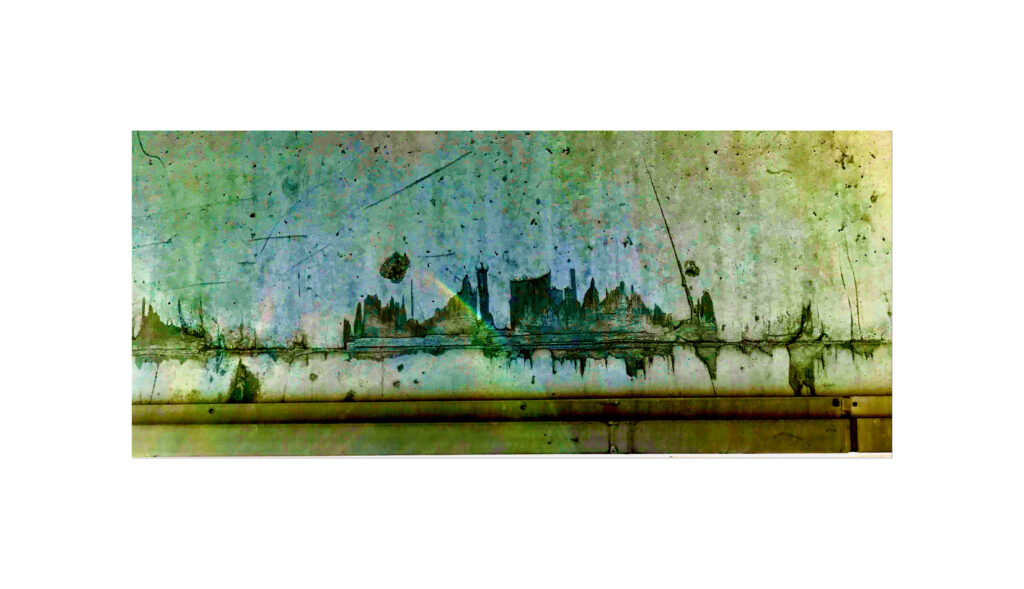
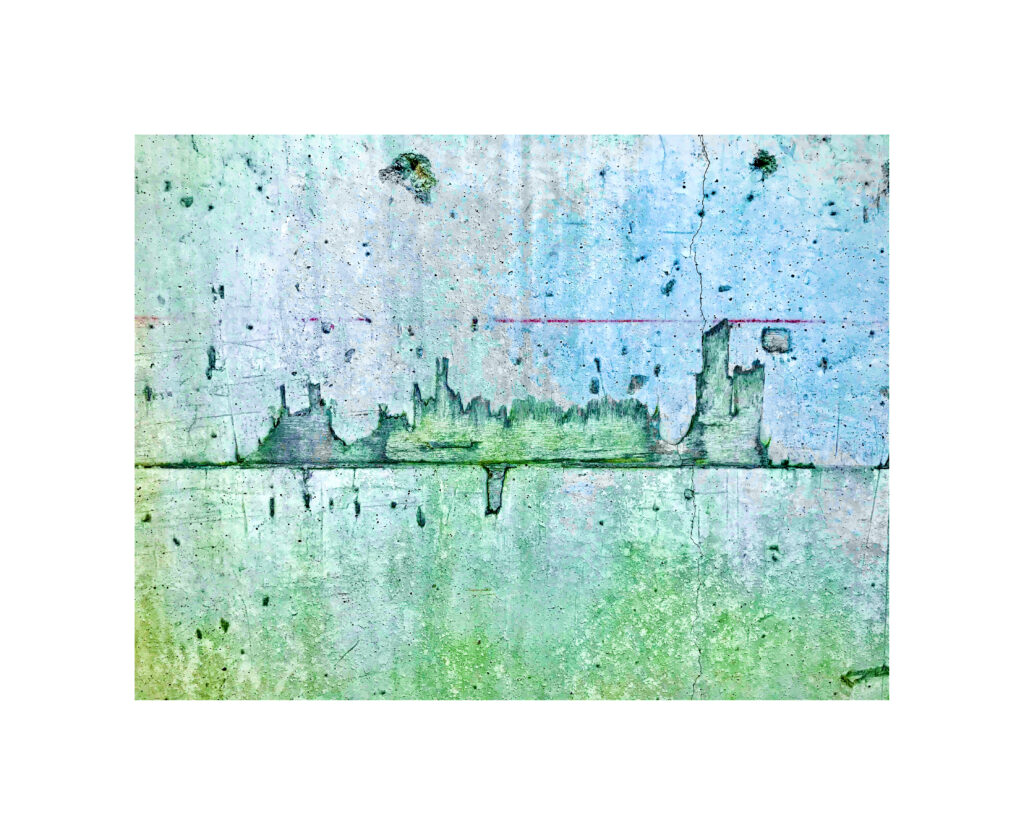
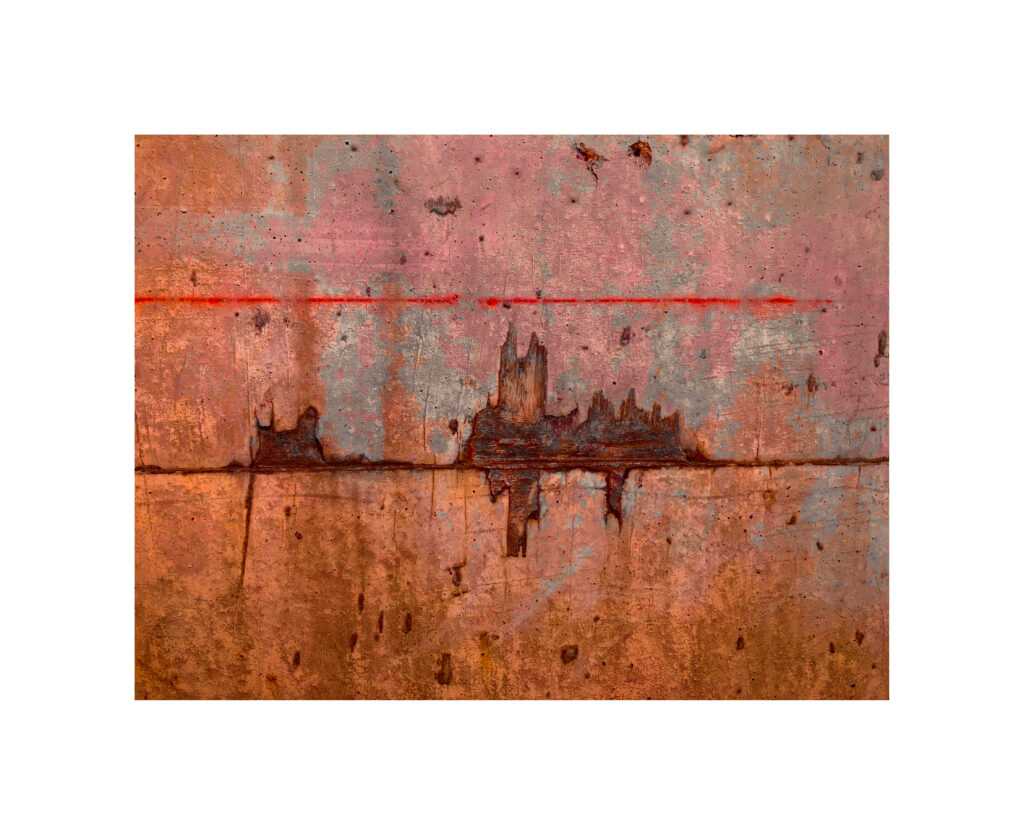
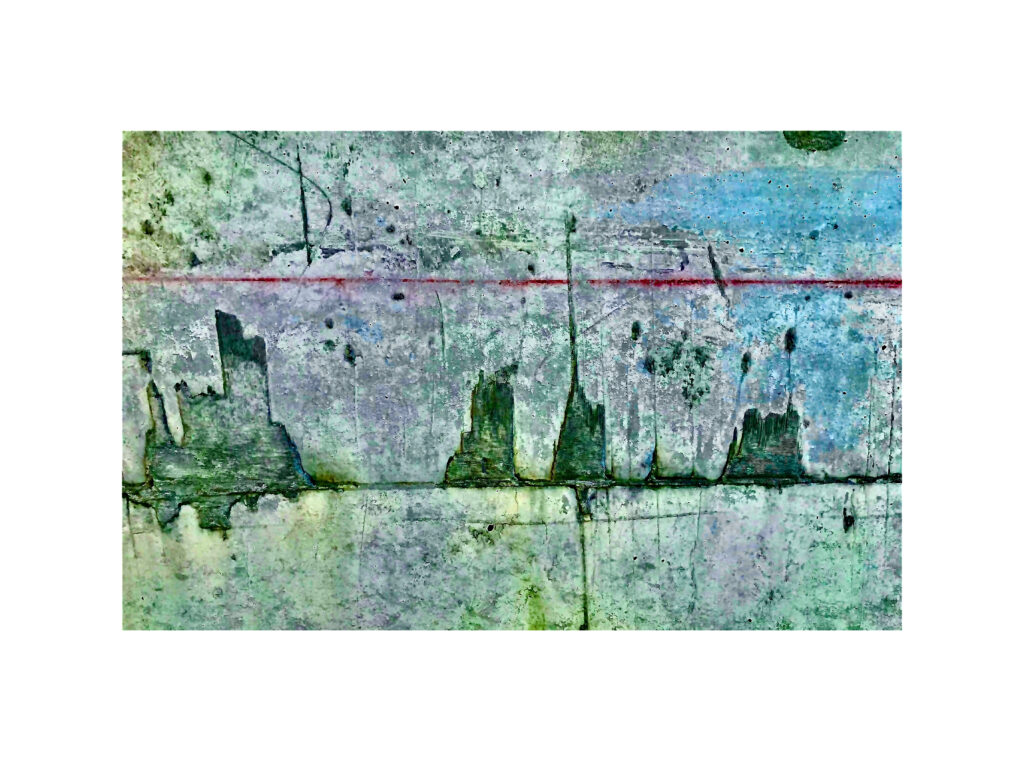
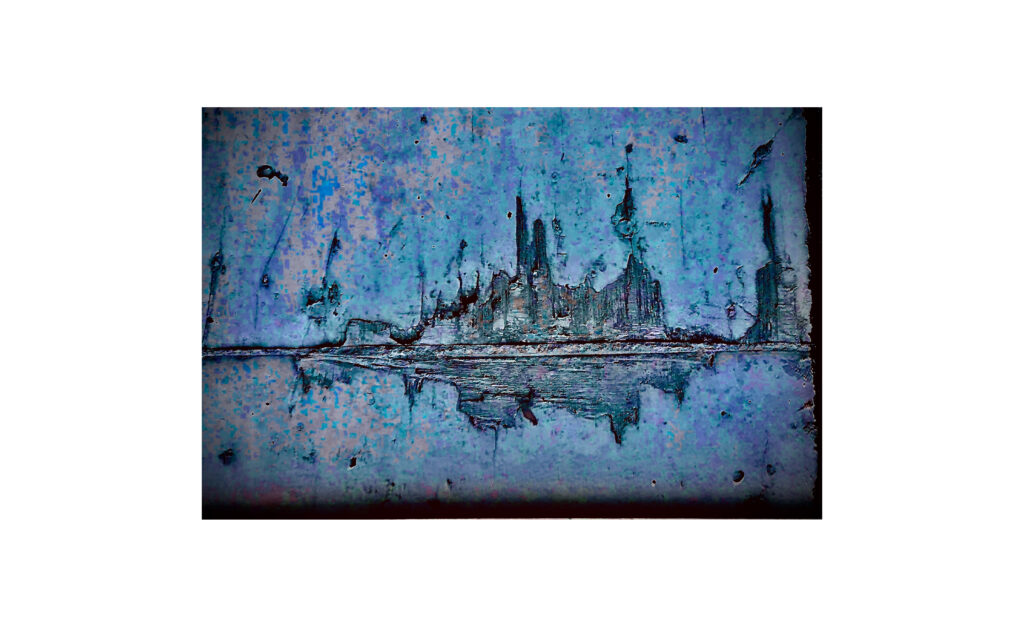

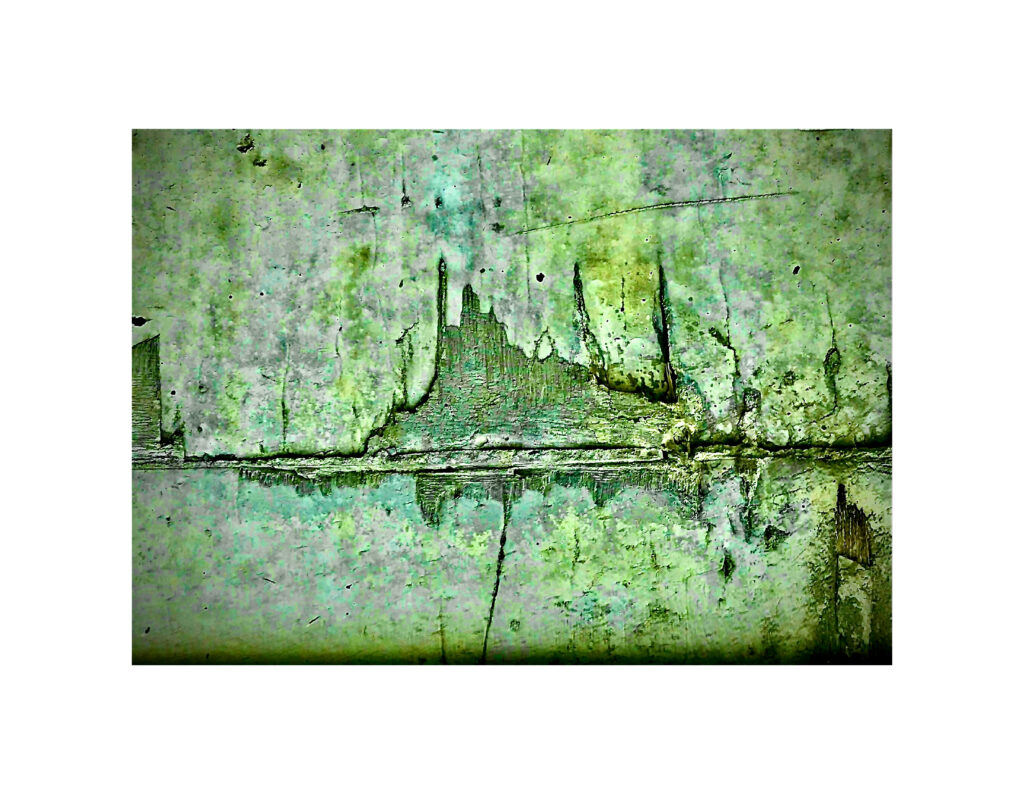
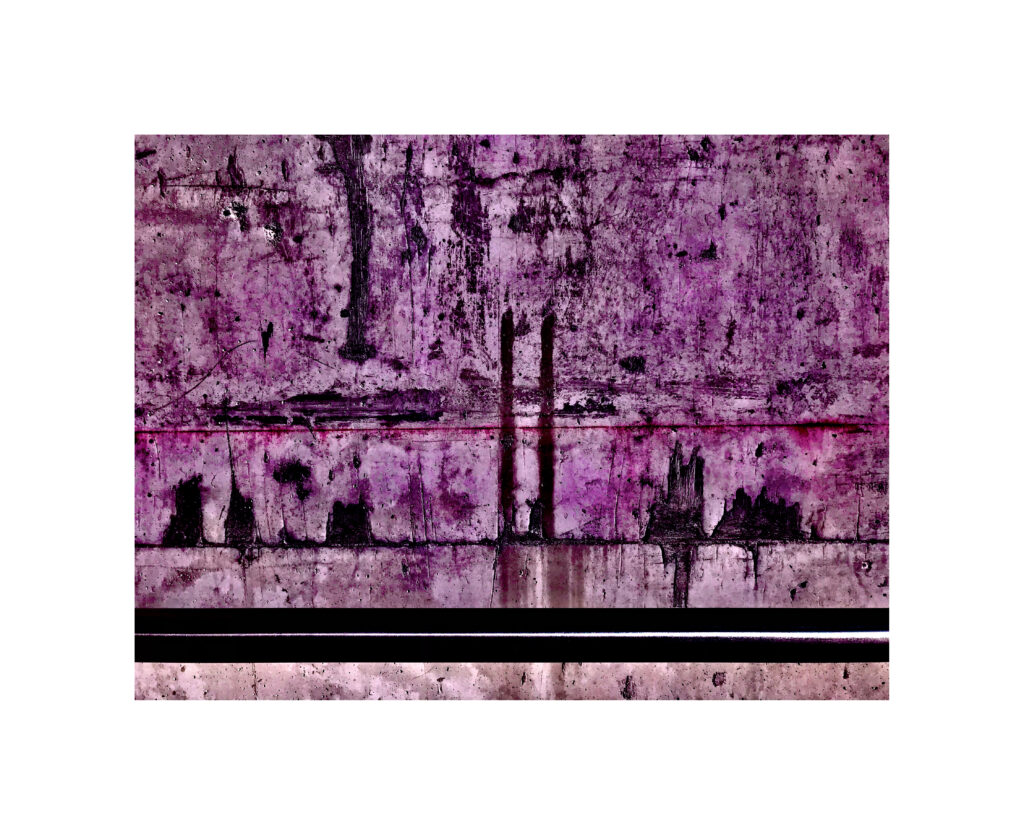
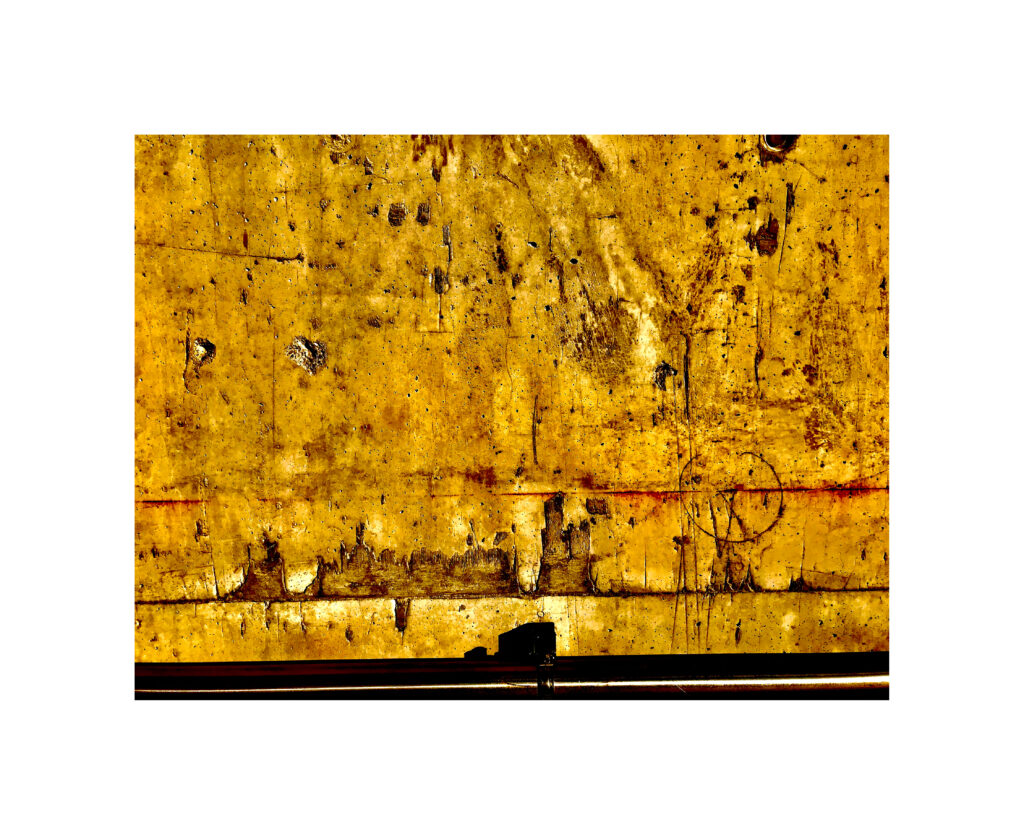
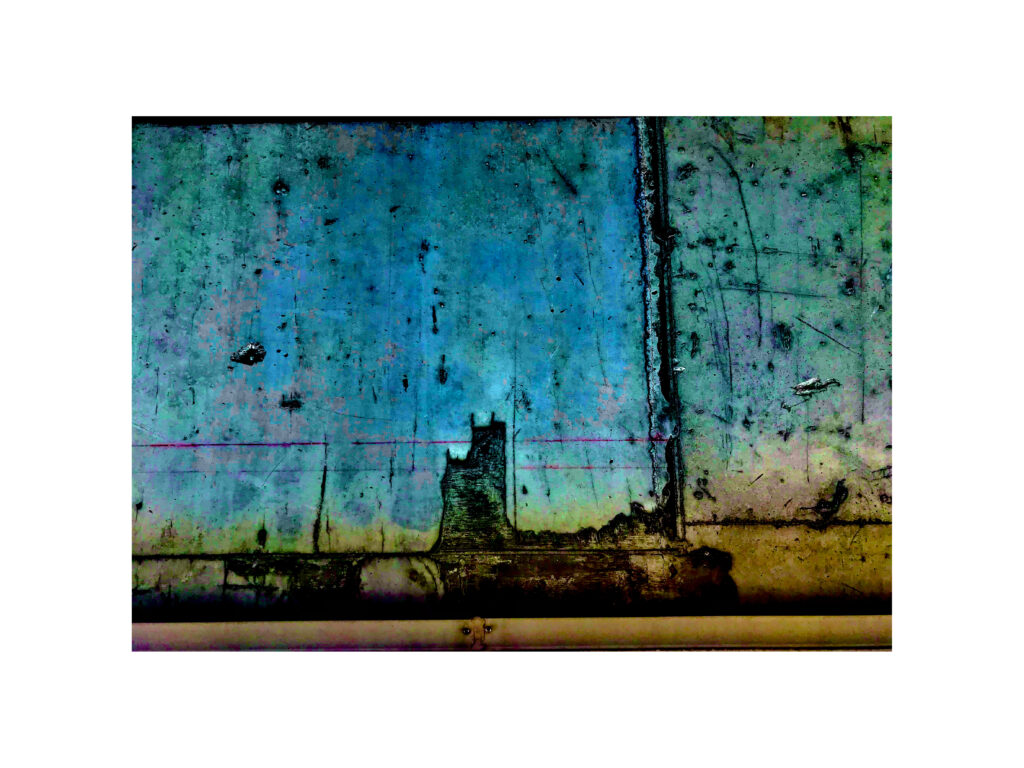
Città invisibili
Palazzi e skyline emergono da segni e stratificazioni di colore su vecchi muri. Paesaggi immaginari o città reali, riportate alle memoria da tracce apparentemente insignificanti. L’autore cita Agatha Christie: “nella mia fine è il mio principio” ad indicare come da una piccola immagine possano scaturire ricordi e sogni. Il resto è nelle mani dell’artista, che aggiungendo colori accesi o pastello arricchisce il racconto e ci fa contemplare questa nuova realtà.
Buildings and skylines emerge from signs and stratifications of color on old walls. Imaginary landscapes or real cities, brought to mind by seemingly insignificant traces. The author quotes Agatha Christie “In my end is my beginning” to indicate how memories and dreams can spring from a small image. The rest is in the hands of the artist , who by adding bright or pastel colors enriches the story and makes us contemplate this new reality.
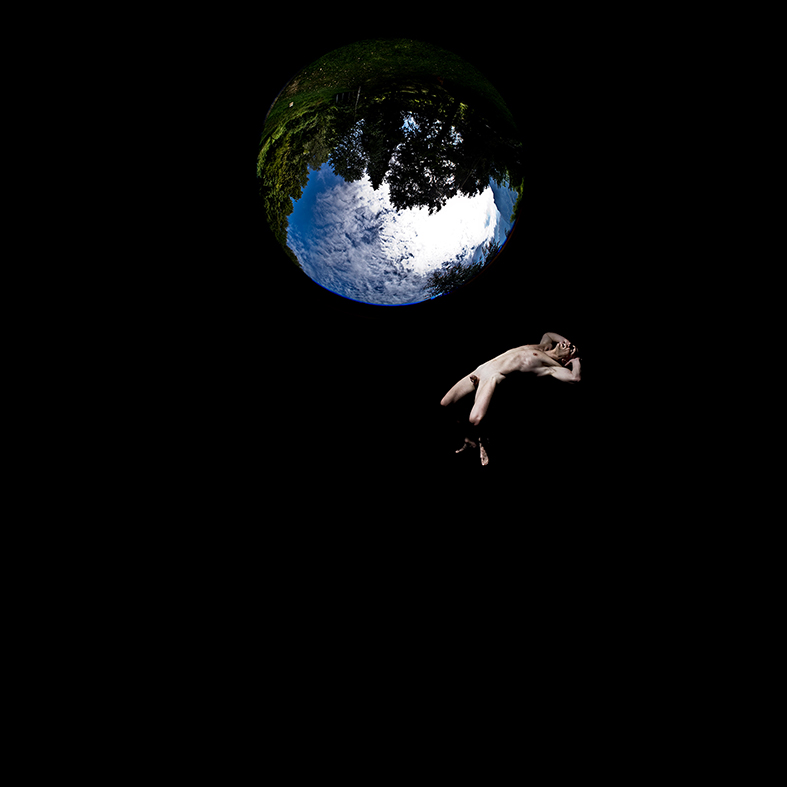
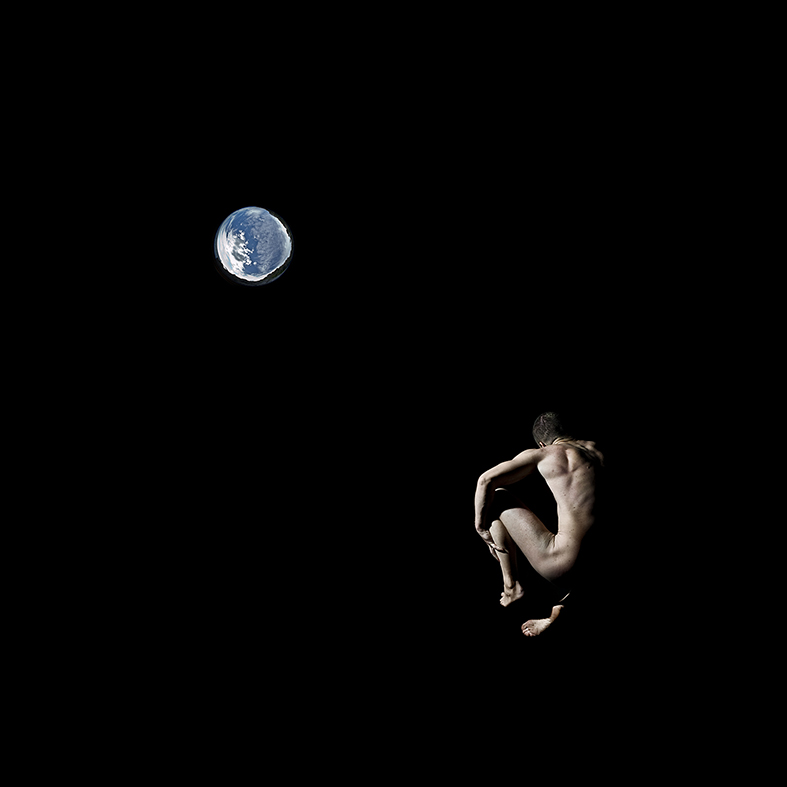
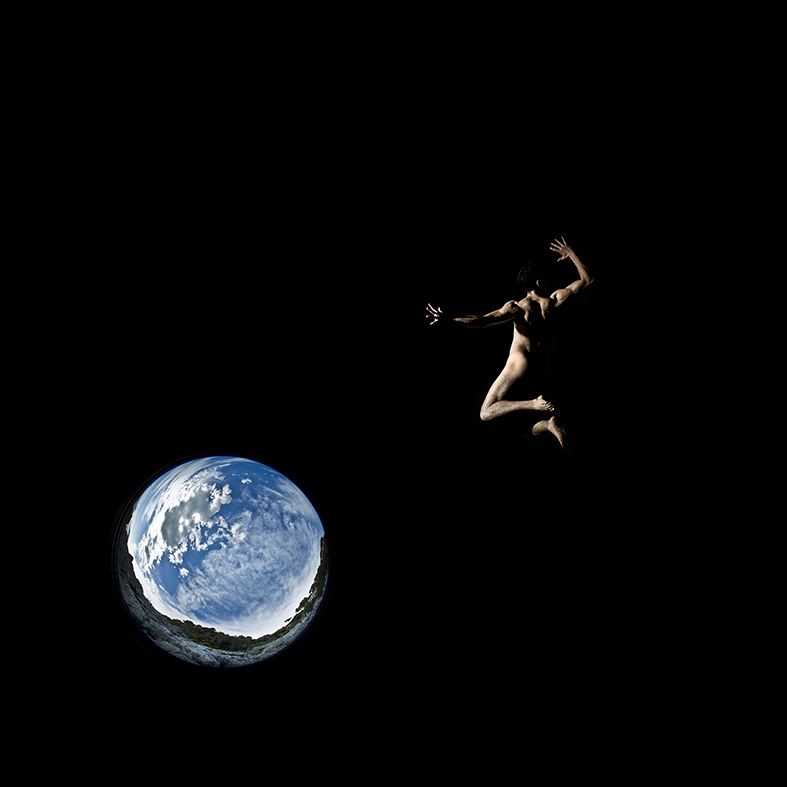
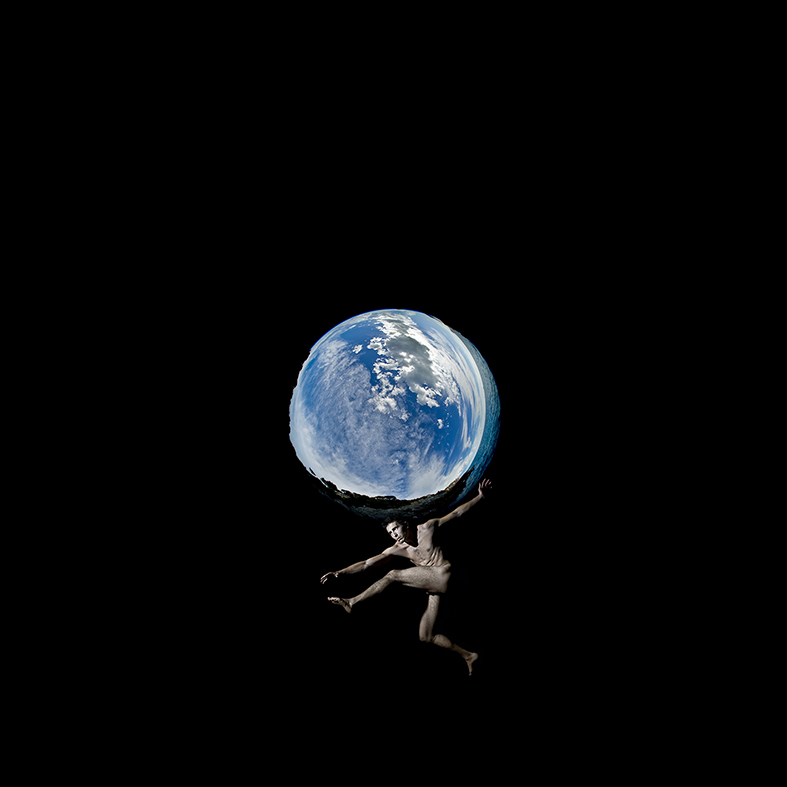
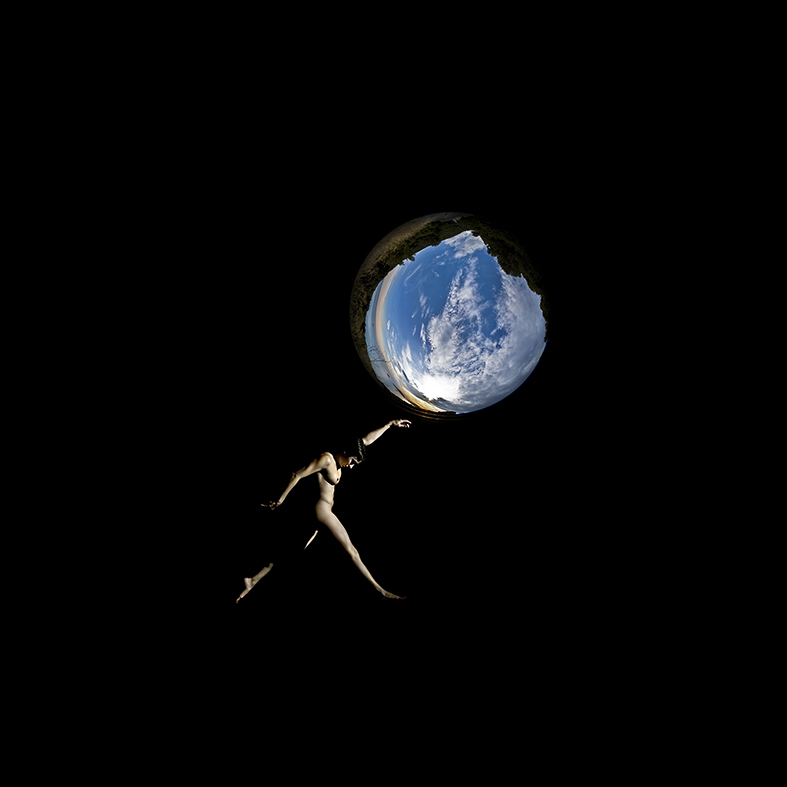
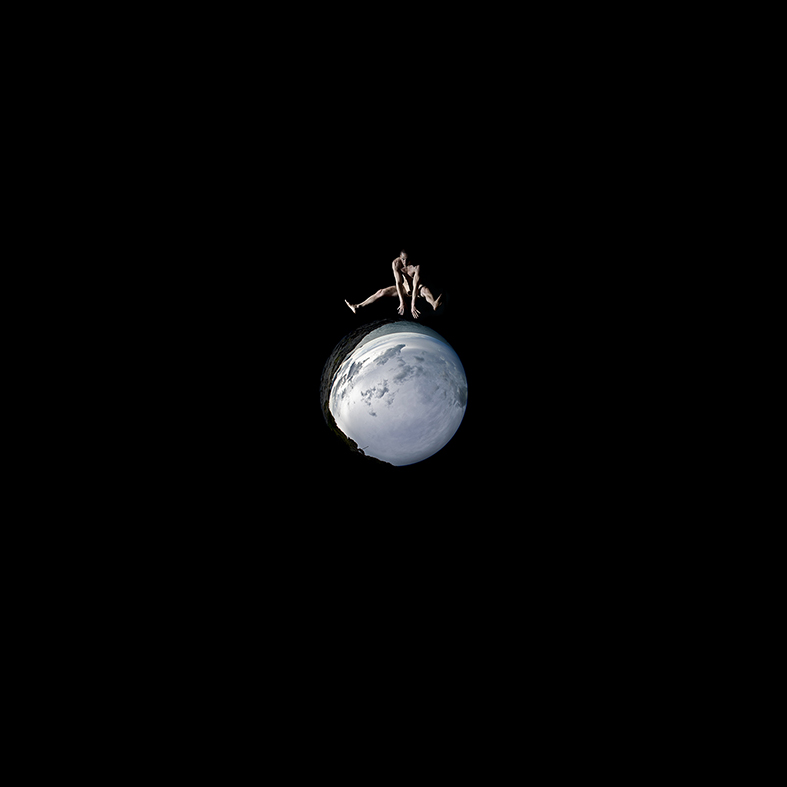
Orbite
il Pianeta è il perno essenziale della condizione umana.
da esso prendiamo luce, peso, vita.
una vita affrontata con energia, determinazione, rabbia, gioia, o anche paura, ma pur sempre sostenuta dalla gravità del pianeta Terra. il resto è uno spazio immenso nel quale, se spegnessi “quella luce”, non saprei nemmeno più che fare. orbite è la consapevolezza che solo QUI, sulla terra “posso esistere”.
the Planet is the essential pivot of the human condition.
from it we take light, weight, life.
a life faced with energy, determination, anger, joy, or even fear,
but still sustained by the gravity of the planet Earth. the rest is an immense space in which,
if I turn off “that light”, I wouldn’t even know what to do anymore.
orbits is the awareness that only HERE, on earth “I can exist”.
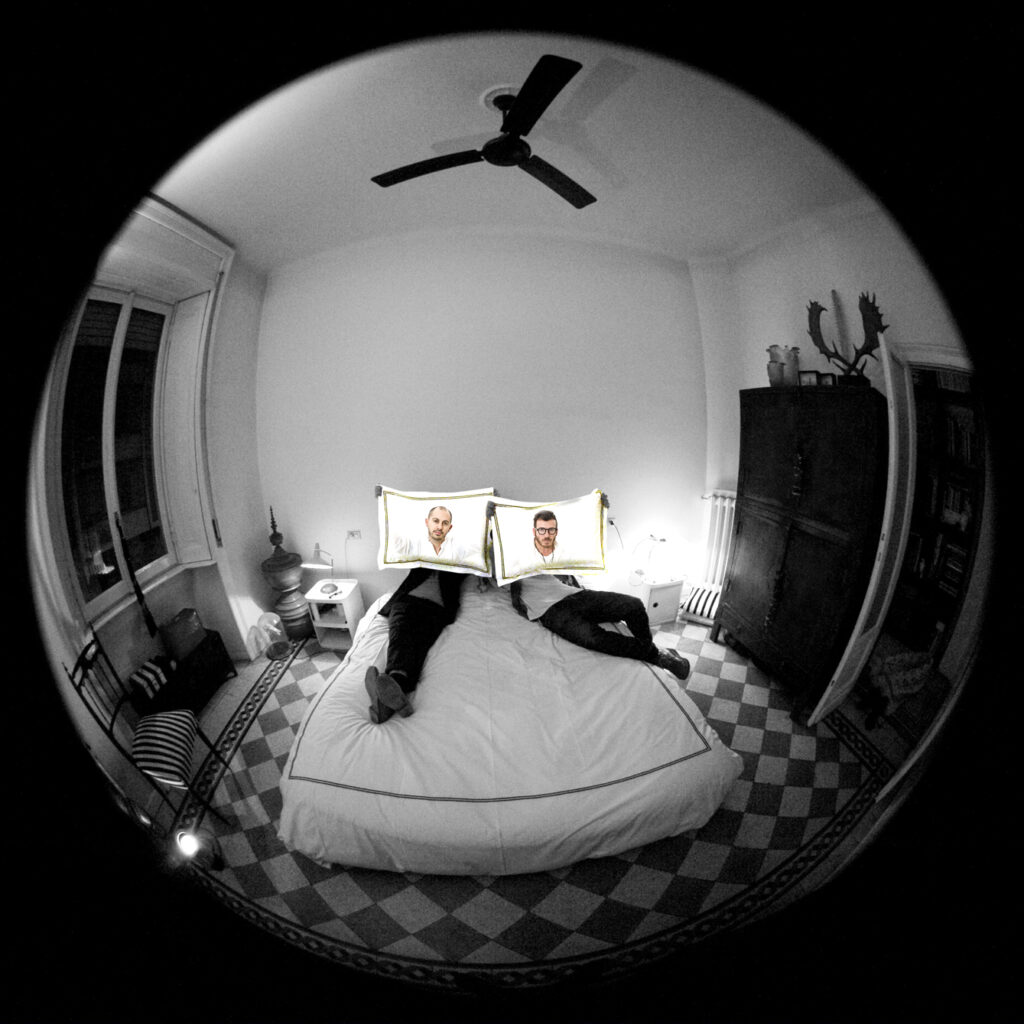
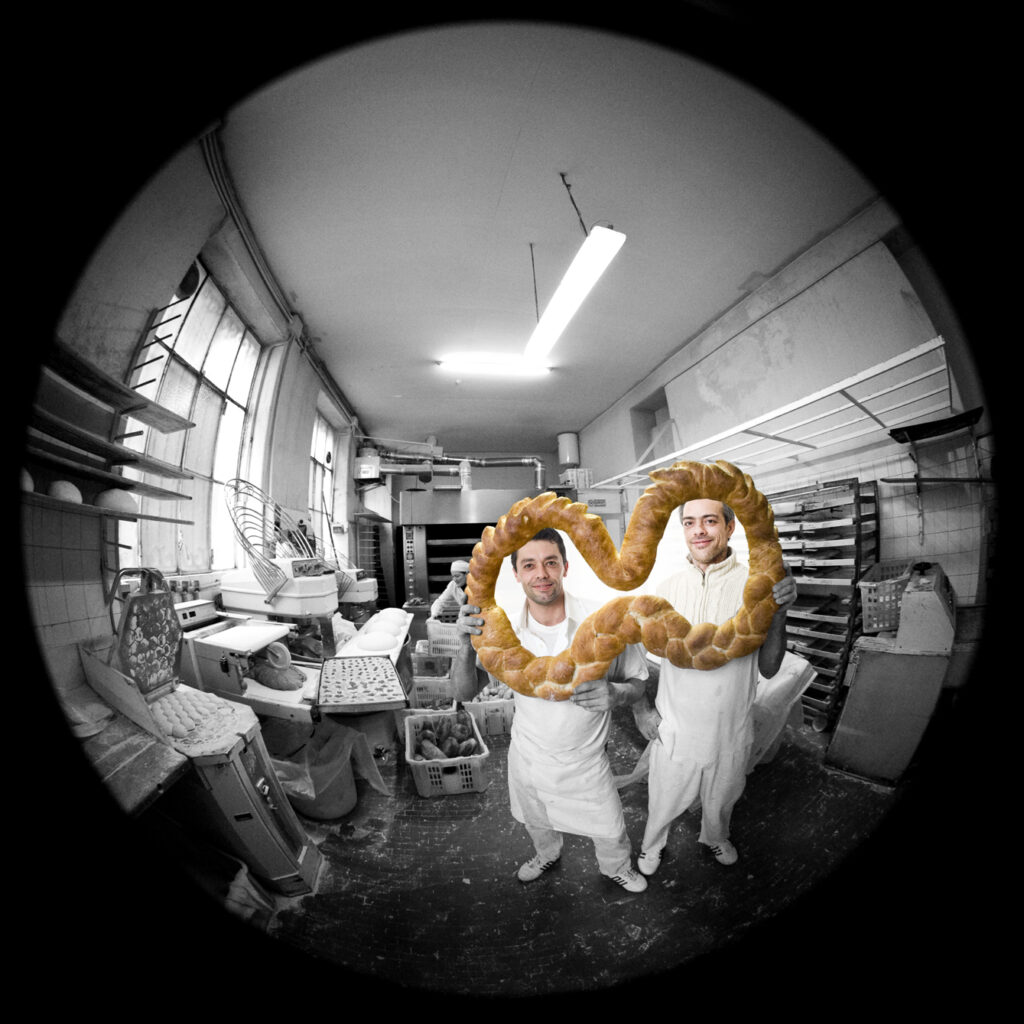
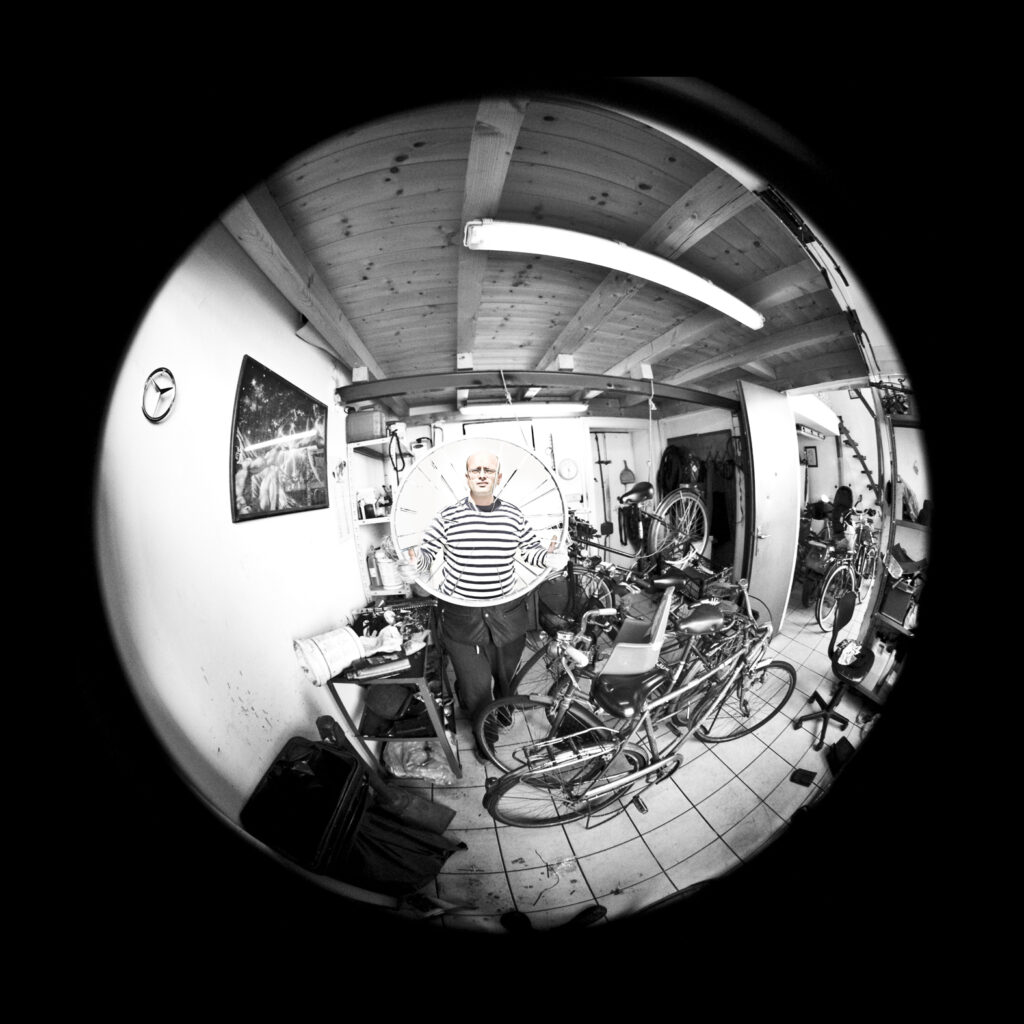
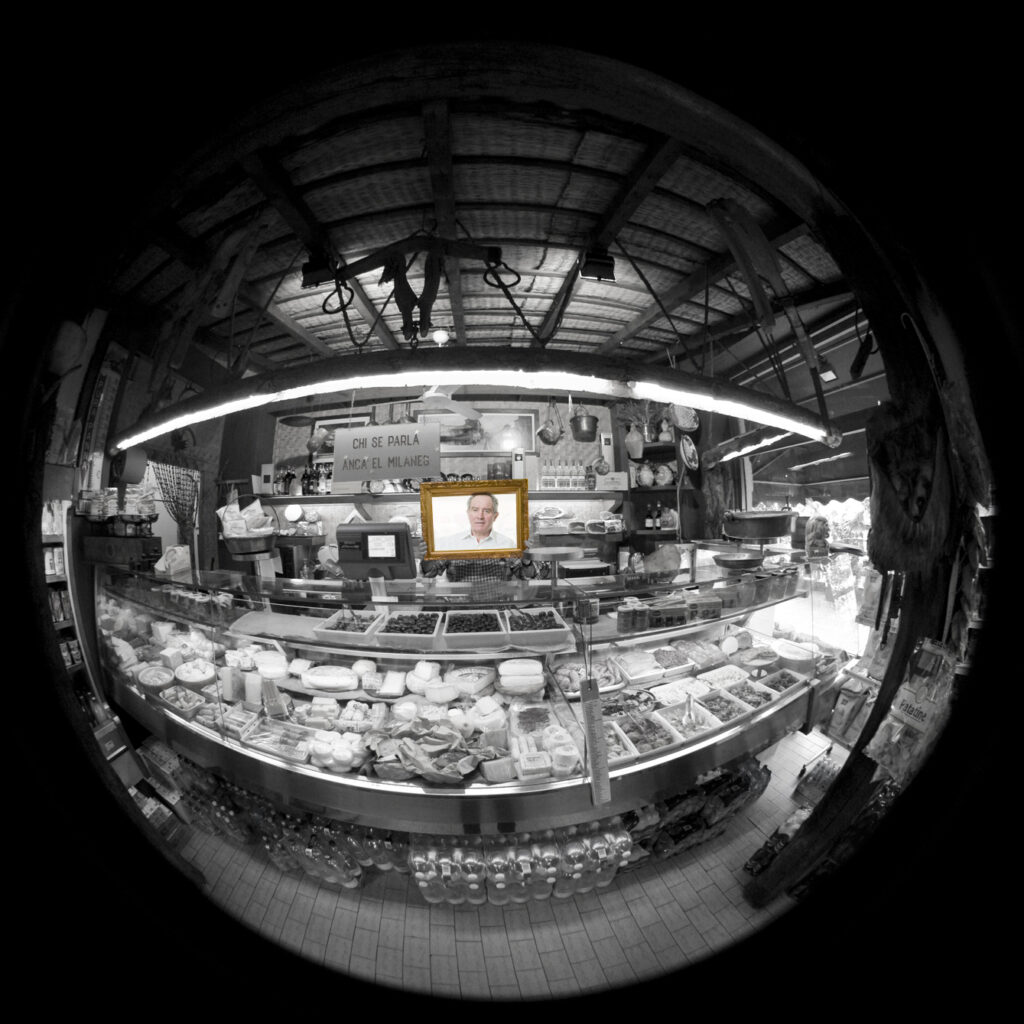
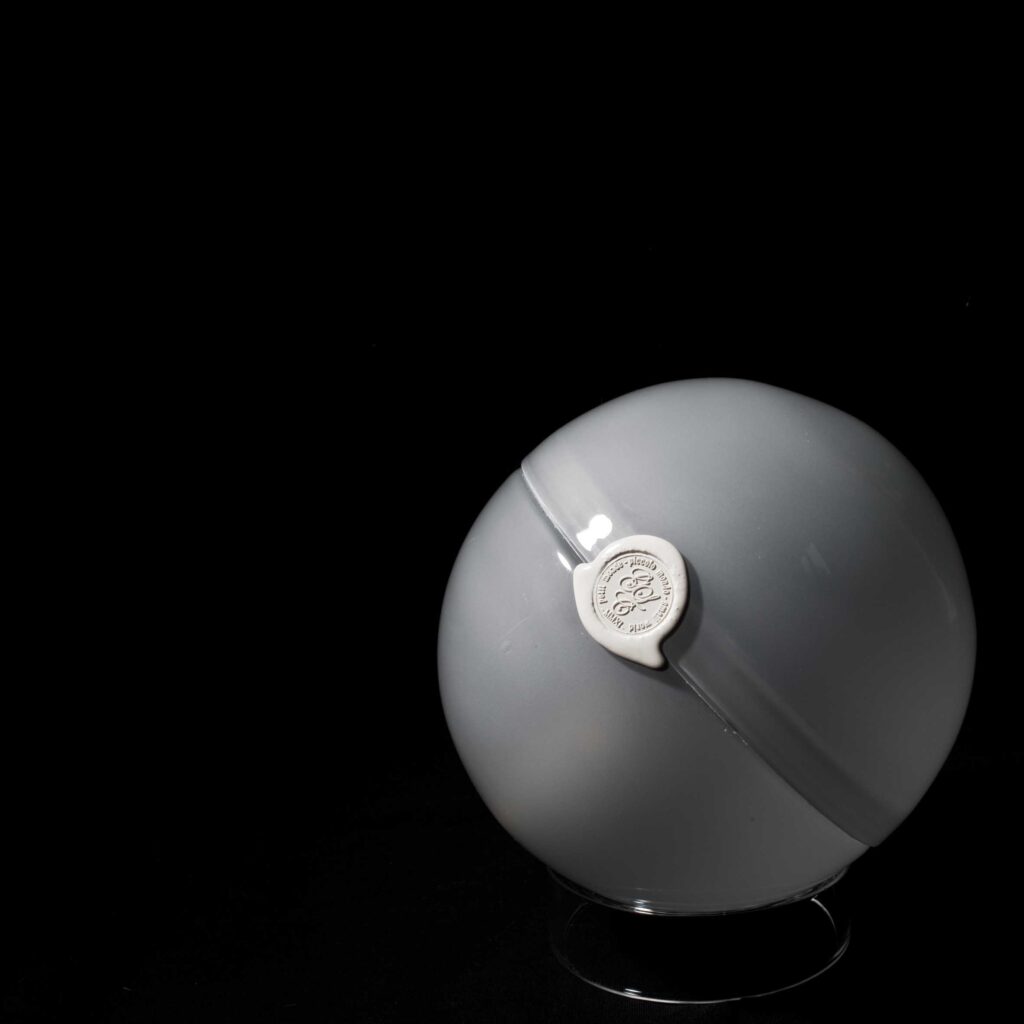
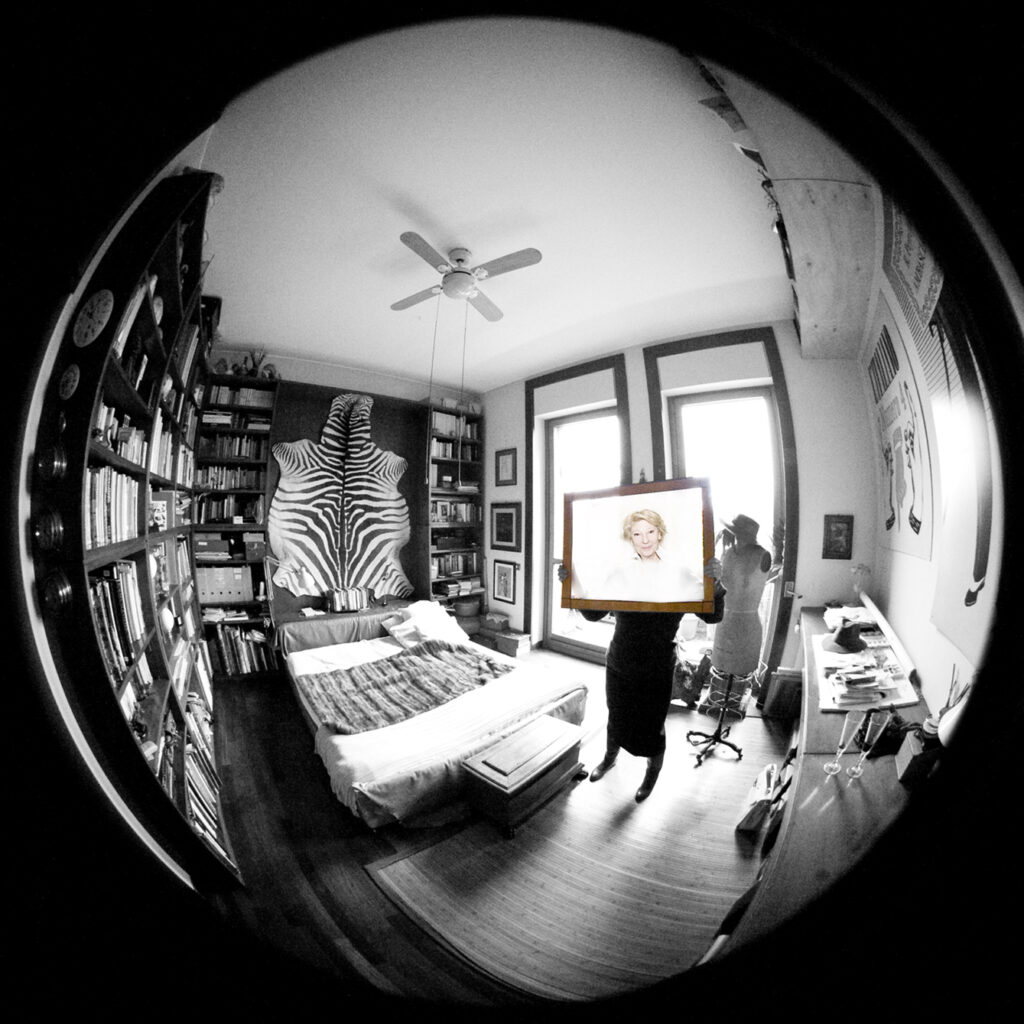
Piccoli mondi
persone ritratte all’interno delle proprie abitazioni o delle loro botteghe circondati dalle proprie “cose” racchiusi in preziosi “globi” di vetro soffiato visibili solo attraverso un piccolo oculare.
in una lettura più ampia l’opera mette in relazione l’uomo e
ciò che possiede, un punto di forza nella cultura occidentale,
mentre guardando con maggior distacco, ne sottolinea le
debolezze. l’essere umano oltre ad essere piccolo e indifeso,
trova conforto in cose che di fatto lo legano e lo imprigionano.
People portrayed inside their homes or shops sourrounded by their “things” enclosed in precious blown glass globes visible only through a small eyepiece. In a broader analysis this project relates man and what he possesses, a strong point in Western culture, looking at it with greater detachment it underlines their weaknesses. The human being as well as being small and defenseless, he finds comfort in things that actually bind amd imprison him.
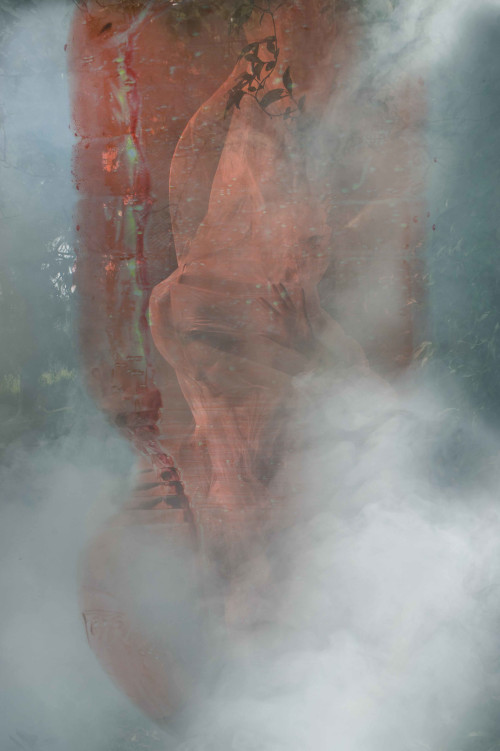
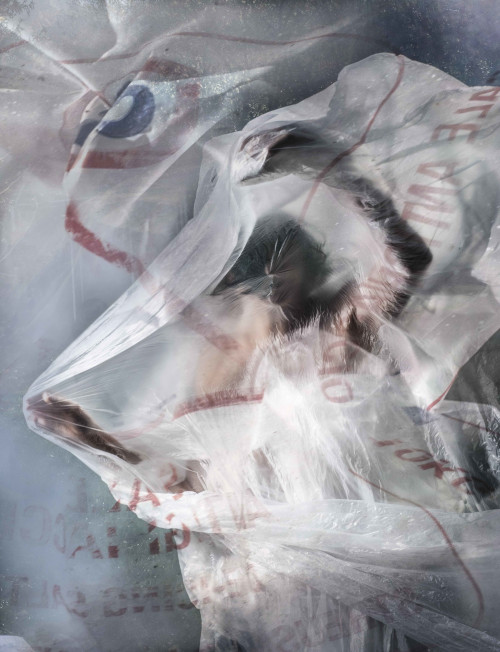
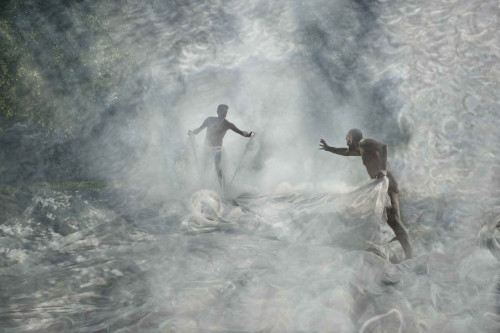
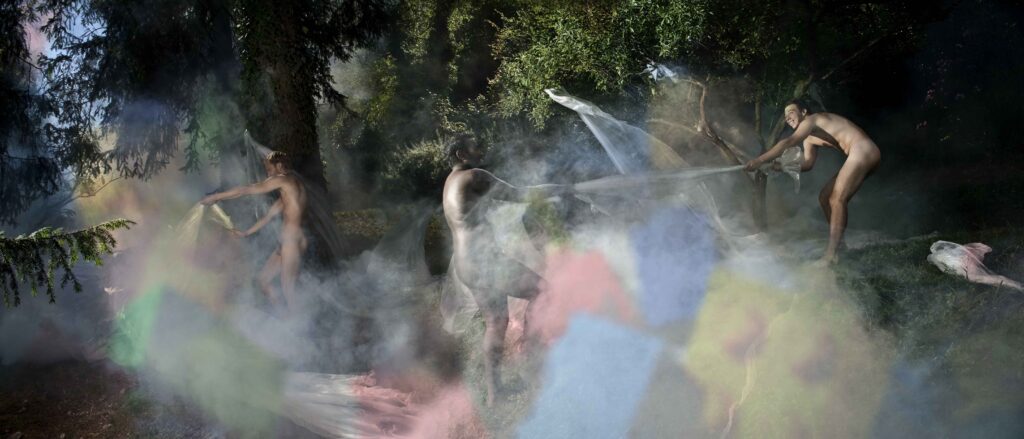
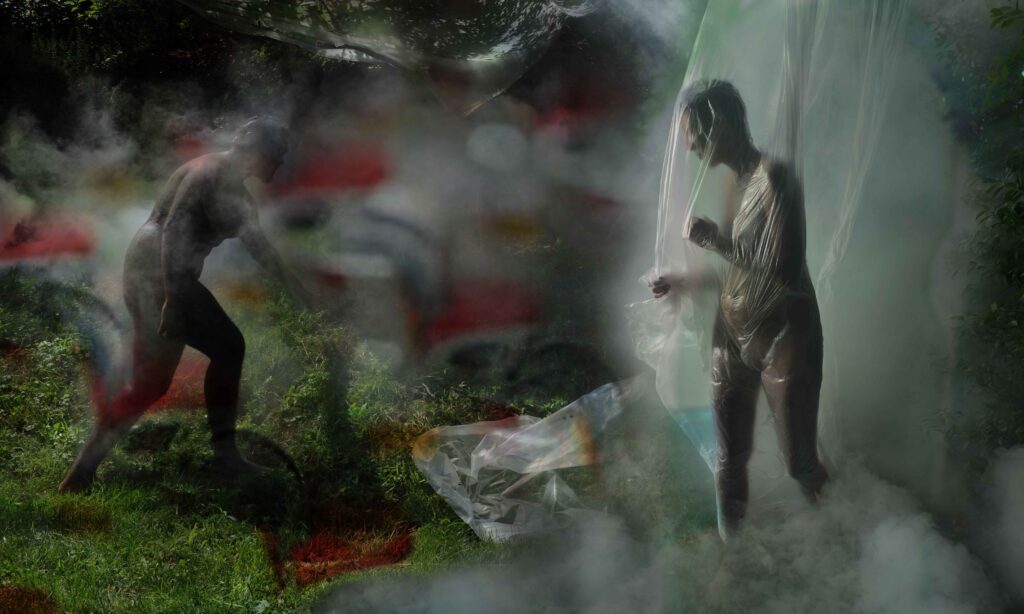
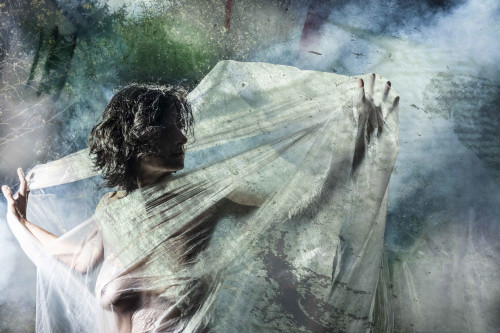
Risvegli 100% biodegradabile
fotografia – 2013
l’uomo e la plastica
un corpo a corpo tra vittima e carnefice
una danza tribale dentro un Eden ideale.
Siamo una società in preda alla Sindrome di Stoccolma per le plastiche usa e getta.
L’essere umano interagisce con plastiche leggere dalle movenze sinuose in un gioco o quasi una danza, mentre oggetti
in plastica di uso comune invadono la scena in modo subdolo quasi sottopelle, ingranditi a dismisura in quanto sfuggiti al
nostro controllo, sono nascosti tra le pieghe dell’immagine e nell’aria stessa che respirano i protagonisti.
I corpi avvolti nella plastica in un giardino ideale, al tempo stesso conniventi e ostaggio del materiale, sembrano danzare
insieme seppur limitati nel movimento e intrappolati; nonostante ciò giocano e convivono con la plastica stessa. Nella
loro sembianza di umana deità, quei corpi vogliono ricordarci che qui, ora, in questo mondo, ci è data la possibilità di
vivere, di esistere, e non solo di sopravvivere a noi stessi e ai nostri scarti.
Vogliono esortarci a una presa di coscienza maggiore che ci porti a reagire a quel “disturbo” diventando consumatori più
responsabili.
Risvegli_100% Biodegradabile è un invito all’azione e, a sua volta, un modo specifico di agire per dar vita al
cambiamento: un “risveglio” delle coscienze comunicato non solo attraverso il messaggio fotografico ma, soprattutto,
attraverso le opere stesse, pensate e create come vere e proprie installazioni fotografiche di valore etico: la stampa fine
art su carta cotone sospesa in una teca di vetro e legno è al tempo stesso mezzo di sensibilizzazione all’utilizzo di
materiali biodegradabili e simbolo di quella sorta di “sospensione” in cui si trova il futuro dell’umanità e della vita sulla
Terra, un futuro subordinato alla scelta, oggi necessaria, di adottare un comportamento responsabile e 100%
biodegradabile.
awakenings 100% biodegradable
photography 2013
Man and plastic
a melee between victim and executioner
a tribal dance within an ideal Eden.
We are a society with a Stockholm Syndrome for disposable plastics.
The human being interacts with light plastics with sinuous movements in a play or almost a dance, while plastic objects
of common use invade the scene in a subtle way almost under the skin, enormously enlarged as they have escaped our
control, they are hidden in the folds of the image and in the very air that the protagonists breathe.
The bodies wrapped in plastic in an ideal garden, both conniving and hostage to the material, seem to dance together
even if limited in movement and trapped; despite this they play and coexist with the plastic itself. In their semblance of
human deity, those bodies want to remind us that here, now, in this world, we are given the opportunity to live, to exist,
and not just to survive ourselves and our waste.
They want to urge us to become more aware that leads us to react to that “disturbance” by becoming more responsible
consumers.
Risvegli_100% Biodegradable is an invitation to action and, in turn, a specific way of acting to bring about change: an
“awakening” of consciences communicated not only through the photographic message but, above all, through the works
themselves, designed and created as real photographic installations of ethical value: the fine art print on cotton paper
suspended in a glass and wood case is at the same time a means of raising awareness of the use of biodegradable
materials and a symbol of that sort of “suspension” in which lies the future of humanity and life on Earth, a future
subordinated to the choice, now necessary, of adopting responsible behavior and 100% biodegradable.
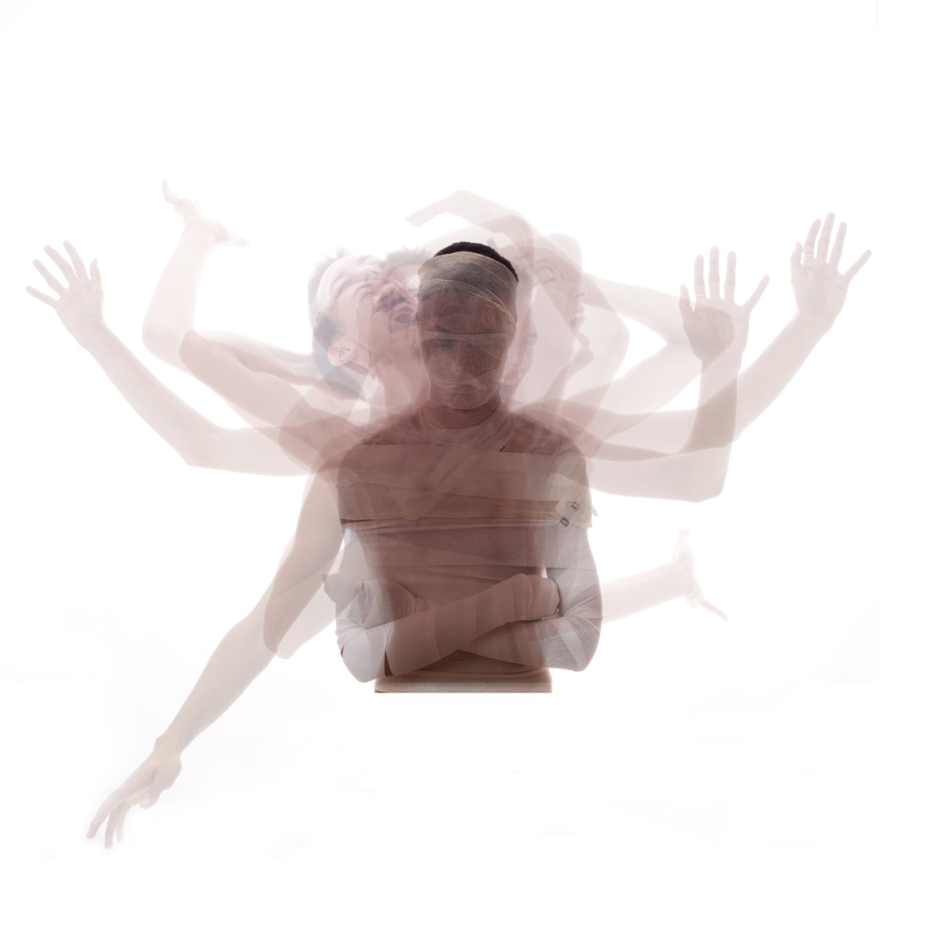
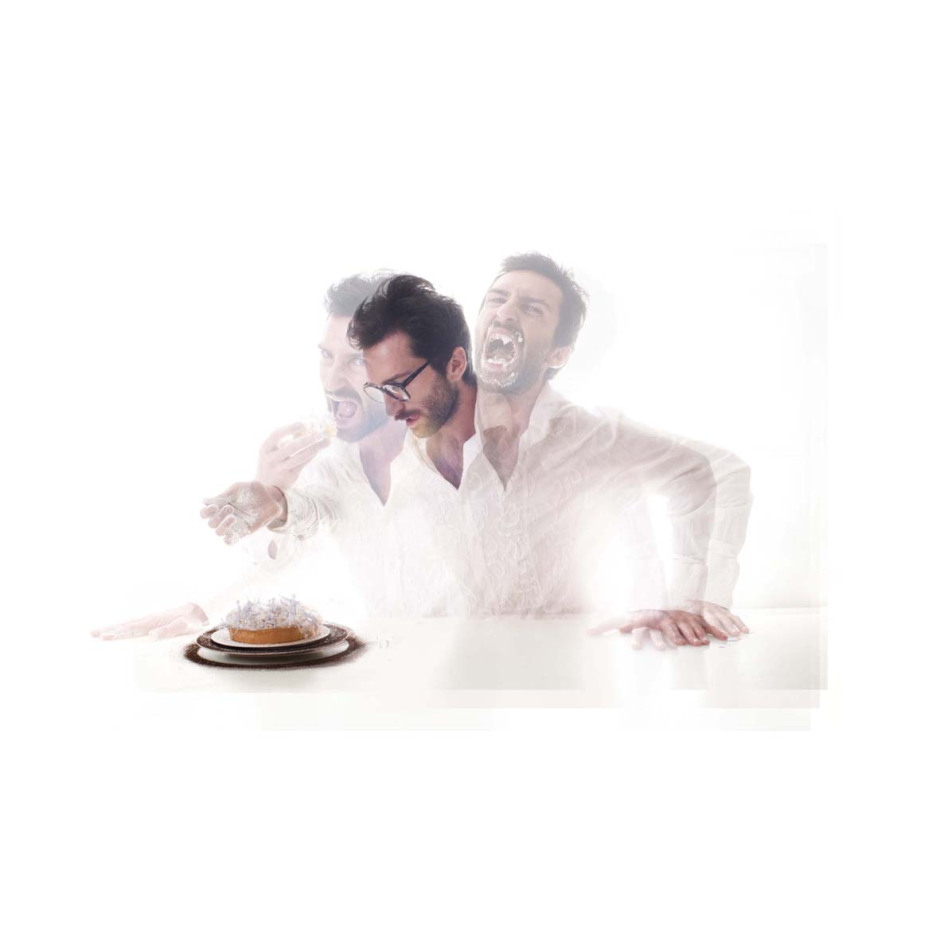
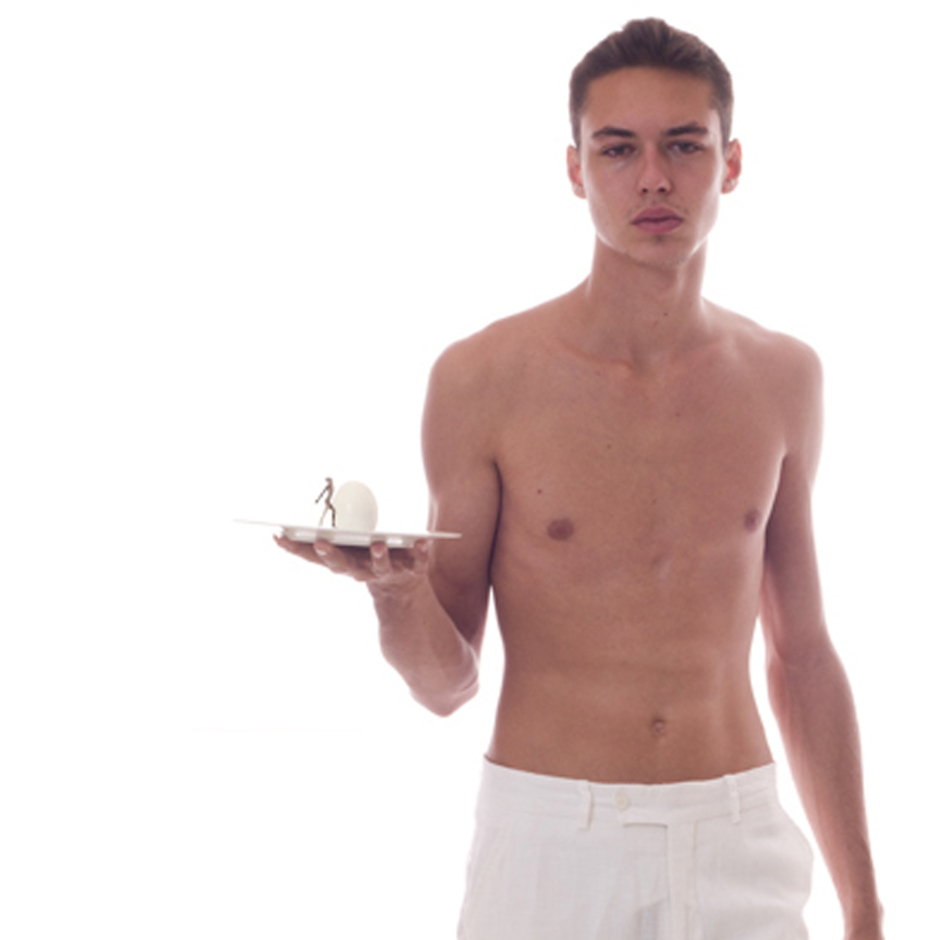
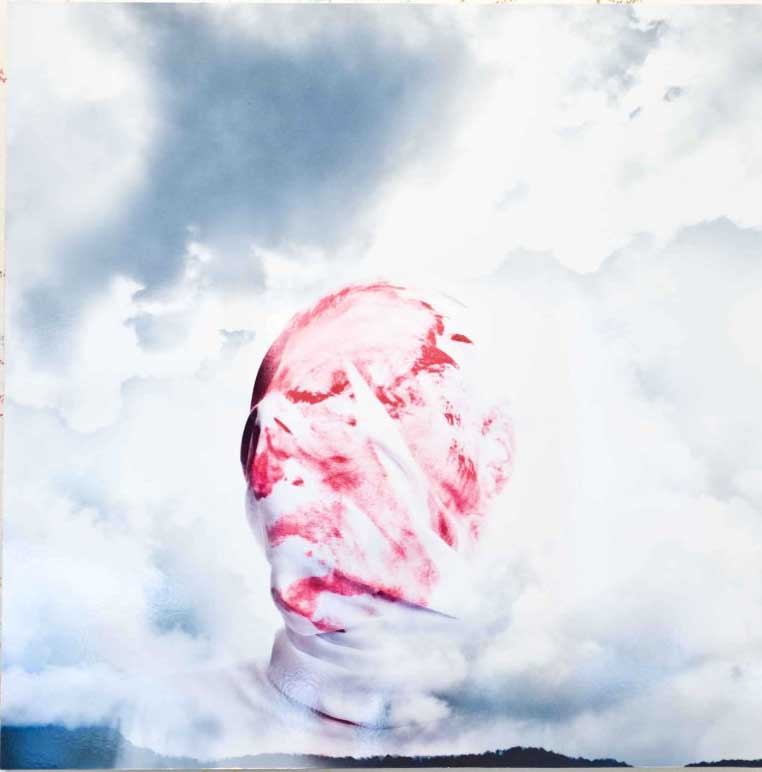
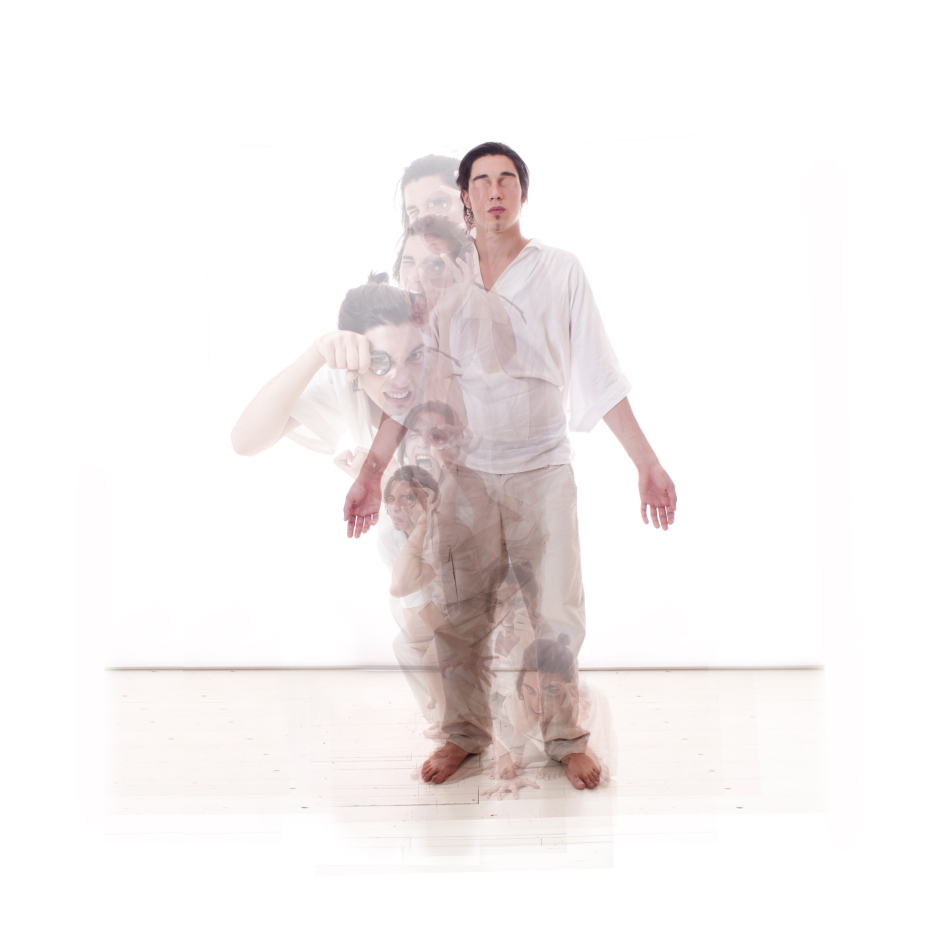
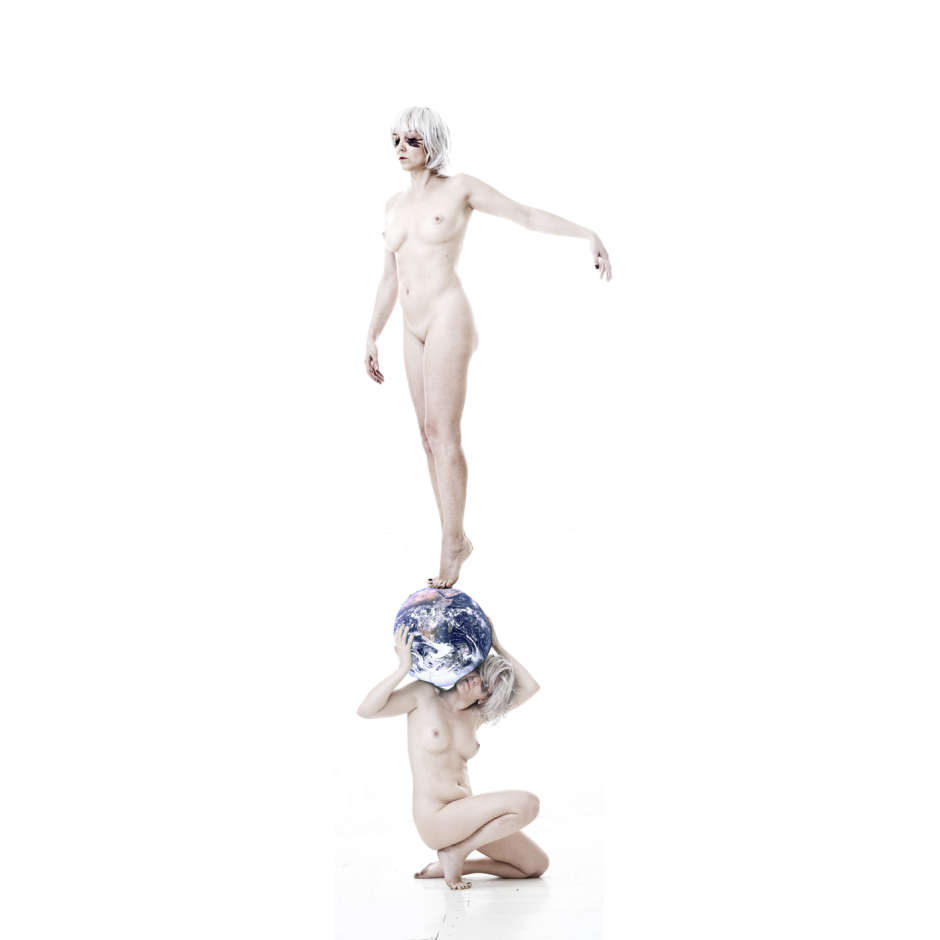
Passi e contrappassi
Nella nostra società, ormai, tutto è permesso ed il vizio, è divenuto vezzo; certo è, che non è così.
I Peccati Capitali (se credi) non sono andati in prescrizione, ed è per questo che, ispirandomi ai gironi danteschi, ho lavorato associando ad ogni peccato la propria pena. Rappresentati nella stessa immagine, il peccato e la pena… Passi e
Contrappassi (Gianluca Chiodi)
In our society, by now, everything is allowed and the sin has become a habit; it is certain that it is not so. The Deadly Sins (if you believe) did not expire, and that is why, inspired by Dante’s circles, I worked by associating each sin with its own punishment.Represented in the same image, sin and punishment … Steps and Retaliations
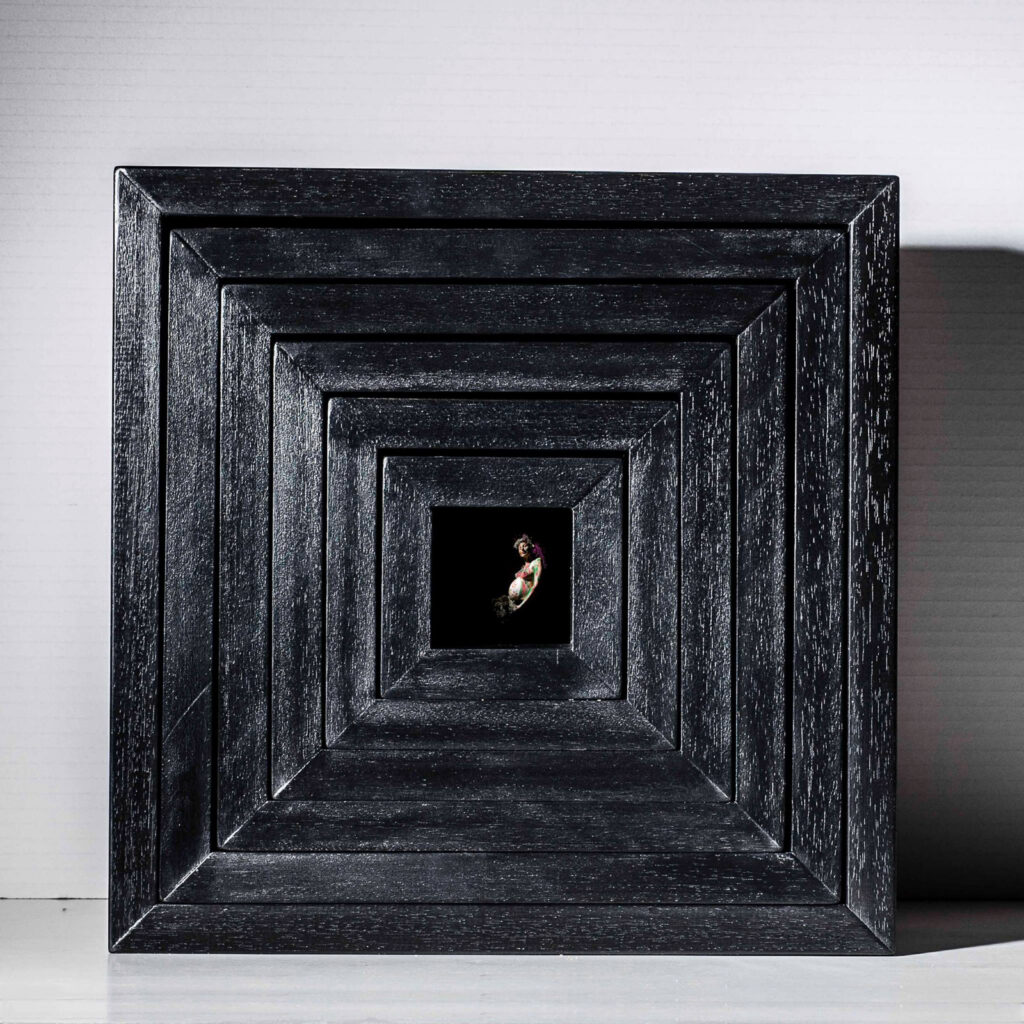
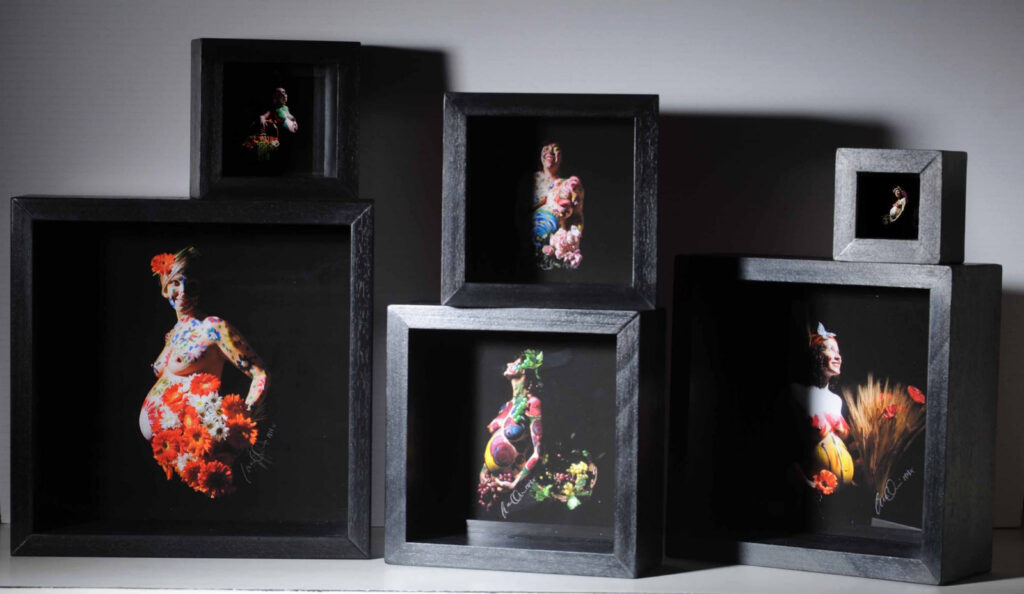

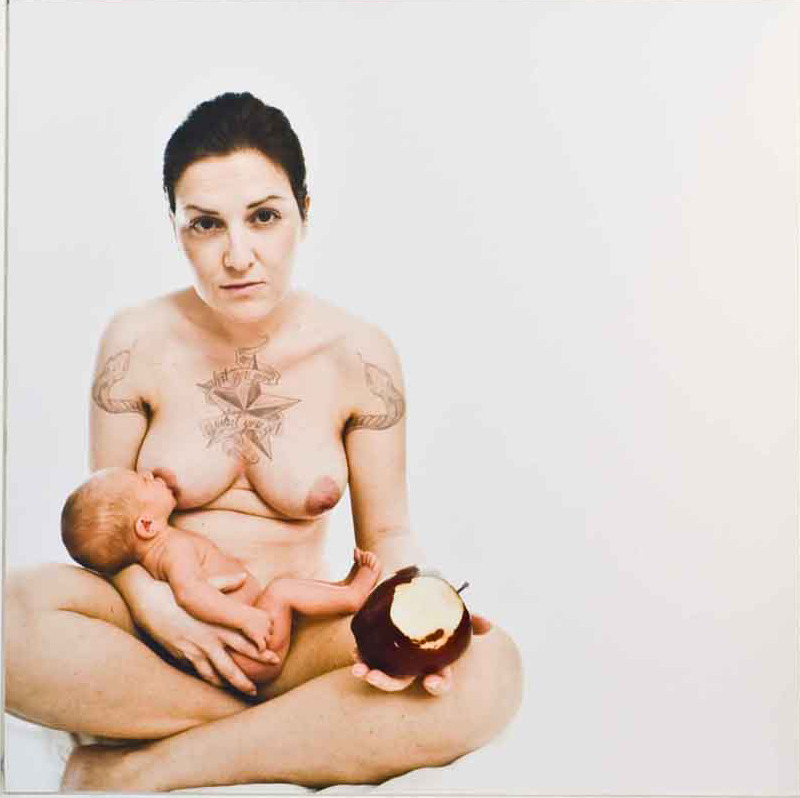
Donne
Biografia
Gianluca Chiodi classe 1966 e’cresciuto tra Milano e Reggio Emilia. La passione per la fotografia e l’abile utilizzo della luce per iniziare a lavorare per il mondo pubblicitario, senza però trascurare la costante ricerca di nuovi “punti di vista”, originali ed introspettivi (Myopìa). Dal 2003, Chiodi si dedica completamente all’Arte, esprimendosi sempre con la fotografia ma contaminandola con altre tecniche, anche pittoriche, per approdare progressivamente all’installazione.
Attraverso il proprio lavoro, Chiodi ha affrontato ed interpretato temi molto personali ed intimi quali il corpo umano (Anticorpo), l’identità (I’am), l’essere e l’avere (Piccoli Mondi), la religione (Santi, peccati e peccatori), i vizi capitali (Passi e contrappassi), la maternità (Matrioske) ed il sesso (pelle calda). Recentemente Chiodi ha lasciato Milano trasferendosi in un bosco nella splendida cornice del lago di Como. L’immersone quasi totale nella natura gli ha permesso di affinare la propria sensibilità verso problematiche riguardanti la salvaguardia e la tutela del Pianeta Terra. I suoi lavori più recenti, Orbite e Risvegli 100% Biodegradabile, sono entrambi tesi sensibilizzare e far riflettere sulle nostre dirette responsabilità.
Gianluca Chiodi, born in 1966 in Italy, grew up between Milan and Reggio Emilia. The passion for photography and the skillful use of light to start working for the advertising world, without neglecting the constant search for new “points of view”, original and introspective (Myopìa). Since 2003, Chiodi has dedicated himself completely to art, always expressing himself with photography but contaminating it with other techniques, including paintings, to progressively arrive at the installation.
Through his work, Chiodi has faced and interpreted very personal and intimate themes such as the human body (Antibody), identity (I’am), being and having (Little Worlds), religion (Saints, sins) and sinners), the deadly sins (Steps and counterpoints), maternity (Matrioske) and sex (Hot skin). Recently Chiodi has left Milan moving into a forest in the splendid setting of Lake Como. The almost total immersion in nature has allowed him to refine his sensitivity towards problems concerning the protection and protection of Planet Earth. His most recent works, Orbite e Risvegli 100% Biodegradabile, are both aimed at sensitizing and reflecting on our direct responsibilities.